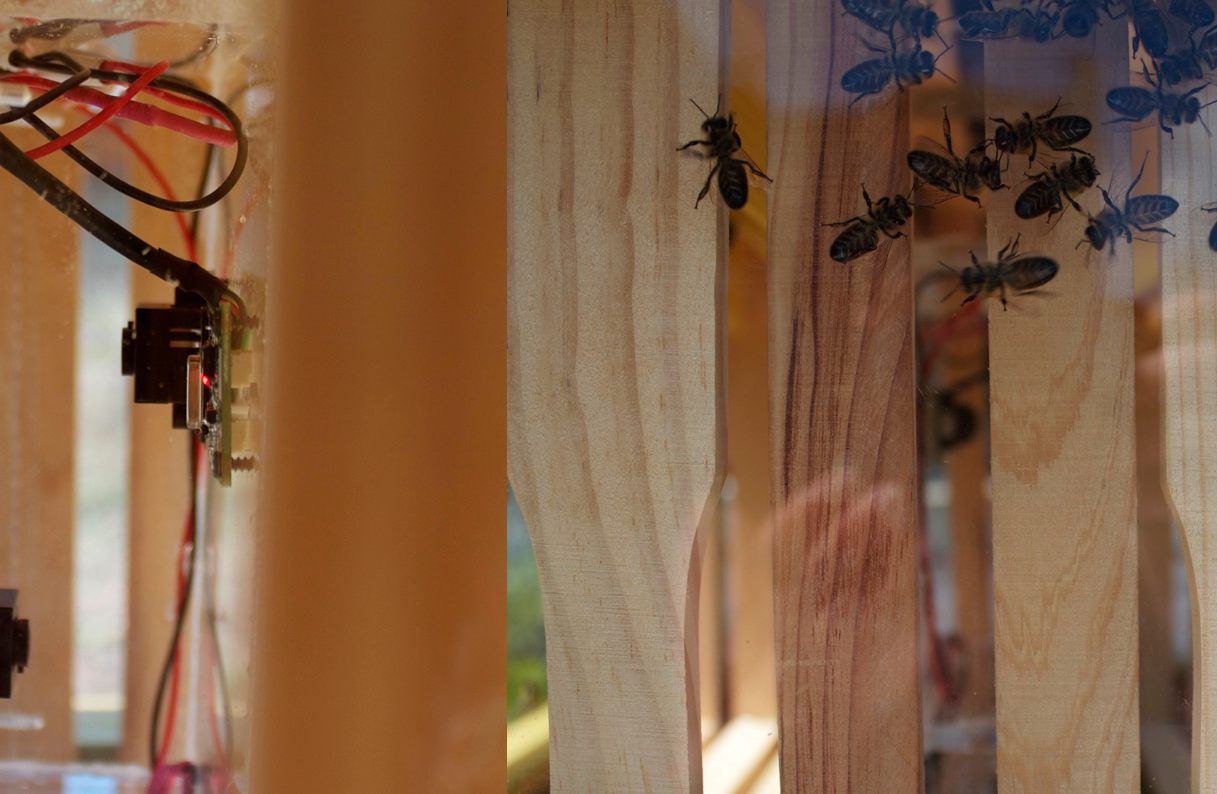Table of Contents
okno
OKNO (2004-2012) is an independent artist organization. We like to mention this because it is determining the way we are working at our projects, which tend to be non-hierarchical, collaborative, and multidisciplinary. Situated within media arts, multimedia, communication and information arts, we are involved in a long term investigation. The question for us is a cultural one, with both social and scientific implications.
What is the role of the aesthetical within ecology, and vice versa is there a new ecological designation within the artistic?
As experimental media artists, we emphasize a tool-driven approach, in an environmental sense. And whatever is hard to put under words, we exert ourselves to make an artwork out of, to understand it better, or simply to express it.
the bee monitoring project: connected OpenGreens
The Bee Observatory project transforms 2 roof top gardens located in the center of Brussels at about half a kilometer
distance from each other into communicating vessels. The approach is to install hives in both of the gardens.
It is expected that the bees will manage to bridge the spatial distance and to associate the locations by going about their business and natural processes within their individual yet overlapping territories. The presence and activities of the bee colonies makes the gardens interconnect and interfere. The emerging inter-space can be perceived as place of encounters and neighborhood.
Observing and monitoring the activities of the hives makes bee information directly available.
Technology: camera's, sensors, réseau citoyen open citynetwork.
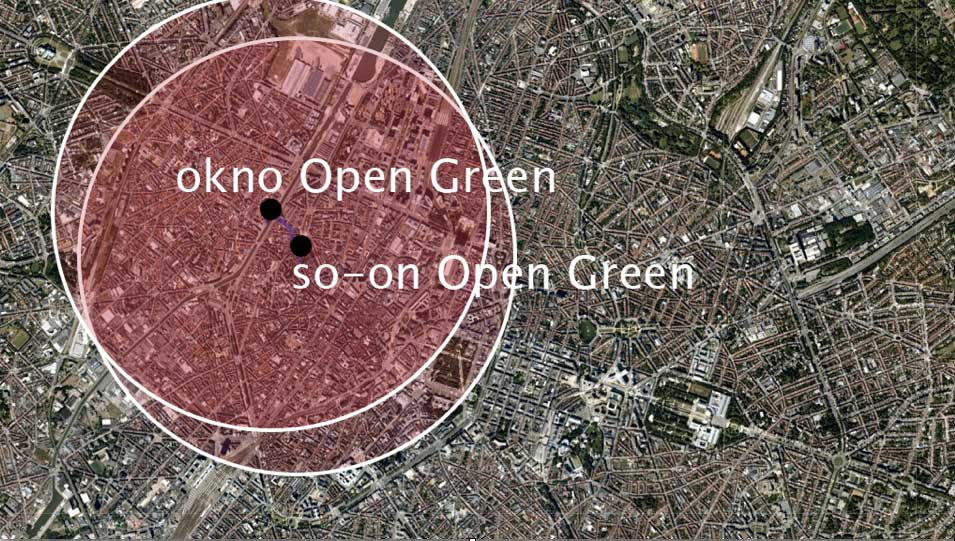
connected OpenGreens - the Bee Observatory
In a first stage, the project idea suggests the transformation of 2 urban roof top gardens into interfering, communicating entities by installing bees into both spaces. The two rooftop gardens are located at about 400 metes of distance from each other at Koolmijnenkai 30 (OKNO) and Vlaamsesteenweg 66, respectively and offer convenient locations for beehives. The “technical” necessity of air channels for free entrance and exit flight trajectories and sunny location for at least parts of the day are met. There is inter-visibility between the two places.
The distance between the locations can be metaphorically bridged by the bee’s presence and their natural activities. Since each colony will be active in a radius of at least a few kilometers from their housing hive, the respective trajectories, areas of floral visits and individual territories will be overlapping and an interference of the hives/gardens takes place. A new space of encounter, the mutual area of existence, can be defined, a new perception of neighborhood can be realized.
Observing and monitoring the activities of the hives coupled with ongoing documentation of each individual hive as well as the interaction between the different colonies will be performed. Information can be obtained from bee hives through visually observing, by listening or smelling. Changes of the hives can be monitored in terms of weight, size or outside/inside temperature of the habitation/colony and via the honey amount or quality. This data has abundant information value, but can also be used and made available in a more indirect/symbolic way. A translation of the signals/data into something publicly accessible is intended. Direct “public moments” on the roof top gardens in the vicinity of the hives add an interactive facet.
bee monitoring technology
The word ‘beehacker’ has been entered into the lexicon of popular culture. A beehacker has been defined as:
(noun) A beekeeper who uses digital tools and technology to help monitor and manage a collection of hives.
Also: bee hacker and —beehacking.
further reading on bee monitoring technology
bee counter
bee counter
beewise_hives_monitoring_gb_v1.0.pdf
brochure_beewise_english_v4.2_.pdf
bee monitoring devices - lowland
hive weight
iPhone swarm detection
track honeybees with temperature
hacker space Praha - bee tracking with temperature
enhanced beehive, monitoring brussels 2011
Bee Monitoring Research in the OpenGreens
The enhanced beehive is a gateway to monitor a honeybee colony and its environment. Numerous possibilities for observing the bees' behavior and important measured values from within the hive are provided as well as measuring data for the climate, soil, and vegetation in the honeybee colony's direct environment. Storing all of the data over a period of several months allows not alone a very well detailed observation but also the ability to discover and follow long-term trends of complex relations between the superorganism and its environment.
The life in and around the hive is monitored by many measurement systems.
Two webcams , equipped with infrared leds, make it possible to see in the dark. The monitor the movement of bees over the frames in the hive.
Since the hive was populated with a swarm (may 4th 2011), the 2 webcams record at 15 fps the life in the hive. Comb building, movements and action.
In the top of the frames (in the hive body) there are 2 temperature sensors capturing the temperature in the beehive, as well as a CO2 sensor and a sensor recording the humidity in the hive.
Outside of the hive, the temperature and the humidity of the direct environment are also measured.
The webcams are connected to a PC board that is configured as a streaming server. It makes the images of the hive in real time available on the internet: http://213.211.134.181:8090/?action=stream.
The data from the different sensors are also logged and available in realtime.
Extra information: bee behaviour, OpenGreens
bee monitoring workshops
(theoretical, practical) to design a monitored beehive:
introduction to the workshops
Bee Monitoring Workshops is a series of workshops in which we try to understand the distributed intelligence of honey bee colonies : their behaviour, ecology and sociobiology. By monitoring the bees and beehives with all kinds of sensors, we study the colony (as a community) and its relation to the urban environment. We will document this research with all kind of media (photo, film, audio, text, code) and we will use the extracted data to make artworks based upon the bees behaviour over time. We try to connect nature and technology in a new relationship of interconnections.
1. The Theory + Reading List
2. The new BeeHives + ObservationBeehives
3. The Data Harvesting (Technology)
4. The Artworks and Projects
5. The HoneyComb

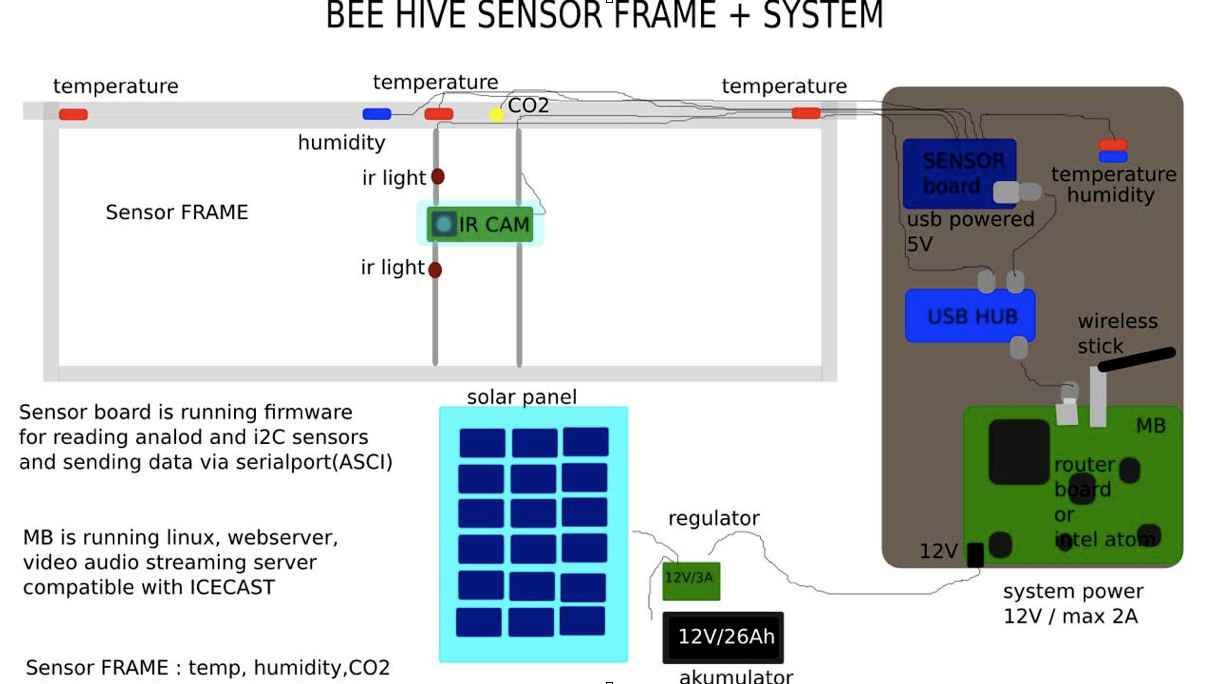
During 2 workshops in february and march 2011, we discussed a digital survey of the honeybees.
Beekeepers, artists and engineers joined their knowledge to come up with a design that offers a realtime, online monitoring of the beehive.
A swarm was put into the hive on may 4th 2011. Since than 2 webcams record the colonies' behaviour. Simultaneously the data of inside and outside temperature, humidity and Co2 level are logged.
OpenGreens database, timeline monitoring workshops
okno bee monitoring 2011-2012 pdf
what did we monitor yet?
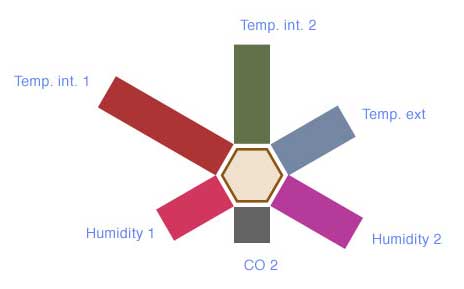
hexagraph representation of the incoming sensordata
- visual: webcams inside hive (infrared) or outside behind window
- sound / vibrations (contactmicrophones - piezo’s, other small microphones)
- temperature inside / outside
- humidity inside / outside
- airpollution / Co2
WEBCAMS: DEVELOPMENT OF THE COLONY
HUMIDITY AND TEMPERATURE
temperature sensor
humidity sensor
combined t° and humidity sensor


graph representing the humidity & temperature data in the beehive#3 at okno, from august 2011 to february 2012
Brood Chamber & Environmental Monitoring. Warming up and cooling down.
Temperature and humidity inside and outside the hive are important indicators of hive health. A design for an environmental monitoring system is proposed able to log temperature and humidity inside the hive brood nest and measure temperature, humidity, and solar activity outside the hive.
Mammals shiver to generate heat. Likewise, some worker bees have a role as ‘heater bees' that can dislocate their wings from their flight muscles and flex those large flight muscles to generate heat. These heater bees are easily identified in images taken by heat sensitive cameras because the temperature of their thorax can reach over 42°C degrees! This contrasts with the normal temperature of the brood nest of 35 degree Celsius. Even when the temperature outside is below freezing, the center of a healthy hive can be 33 degrees.
If the outside temperature falls below 12 degrees C., bees cannot fly and they will be confined to the hive. If the bees either run out of honey or it is so cold that they cannot crawl from the edge of their warm cluster to the honey (below 10 degrees C, they cannot move), they will starve or freeze.
Cooling in the hot summer is just as important. Wax softens if the hive temperature exceeds 35 degrees Celsius. Beside structural problems, this negatively impacts vibration-based communication between bees inside the dark hive. In the hot summer, mammals sweat and pant to cool off. Bees collect water, spread it over the comb, encourage evaporation by mechanically creating air currents inside their hive to cool it down. In both cases, the evaporation of water into vapor provides cooling.
Research suggests that temperature of the hive increases immediately before a swarm occurs and drops below ambient temperature at the time of the swarm itself.
Humidity inside the hive and outside can influence how quickly the water in nectar is evaporated and transformed into honey. It may also indicate environments that favor fungal (Chalkbrood) growths that can devastate hives.
padma - bees fanning on the landing platform
a cross-pollination of beekeeping and technology
realtime graph, comparison of UAF garden and okno garden beehive data
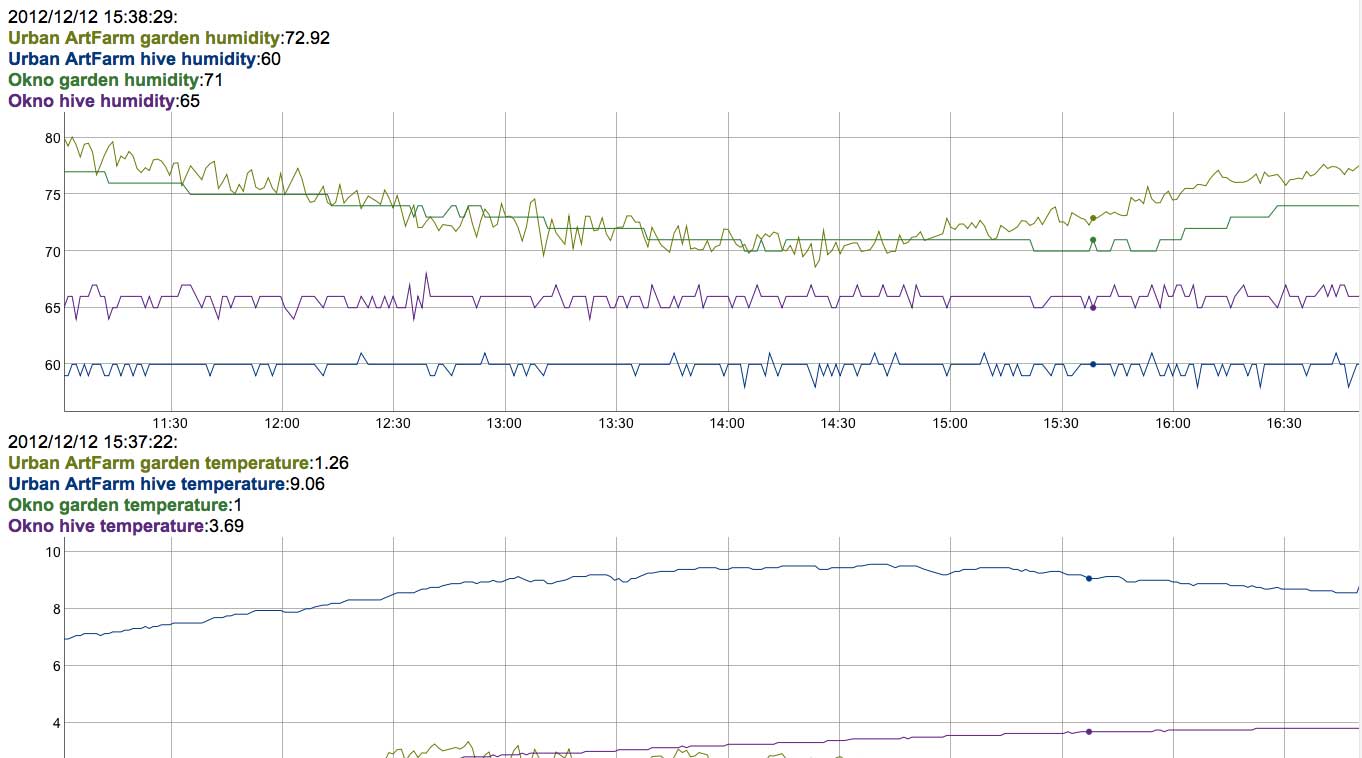
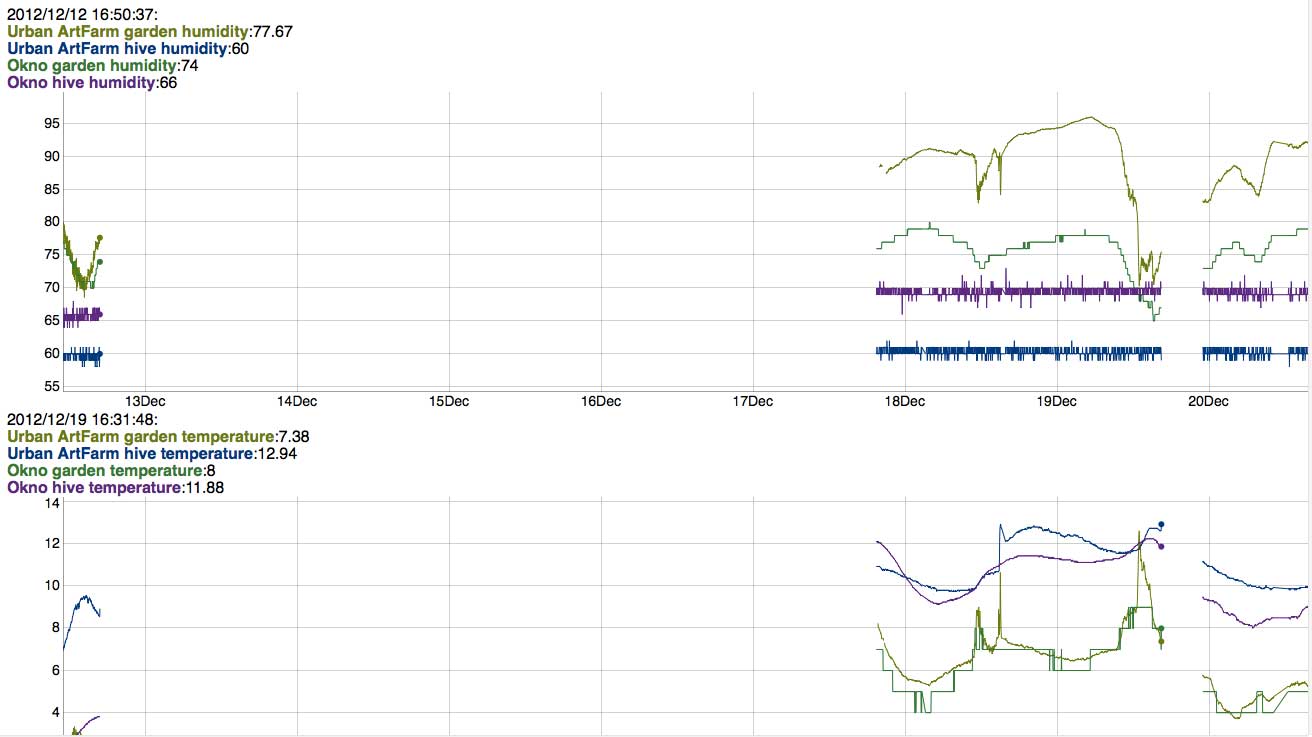
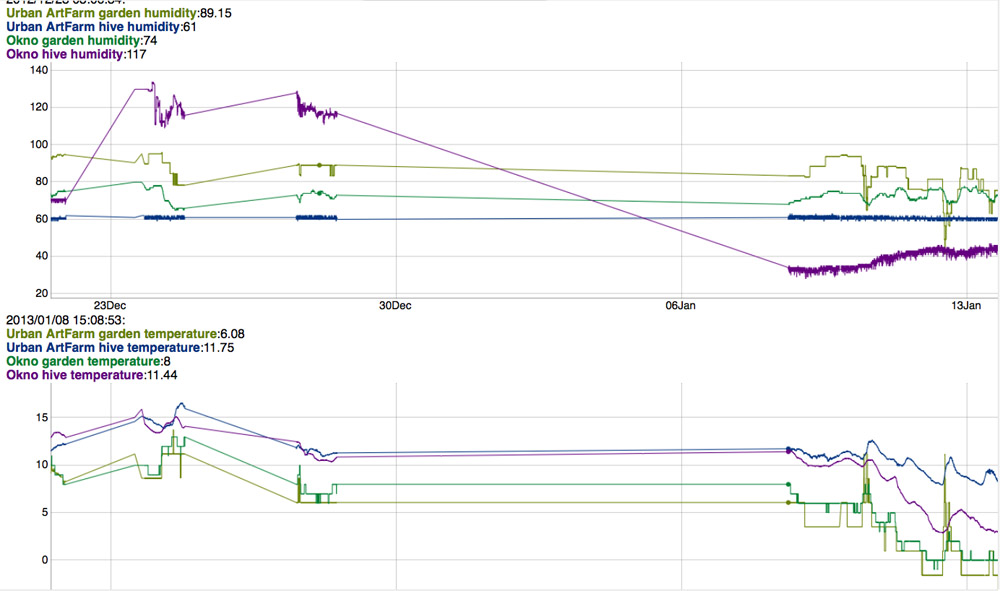
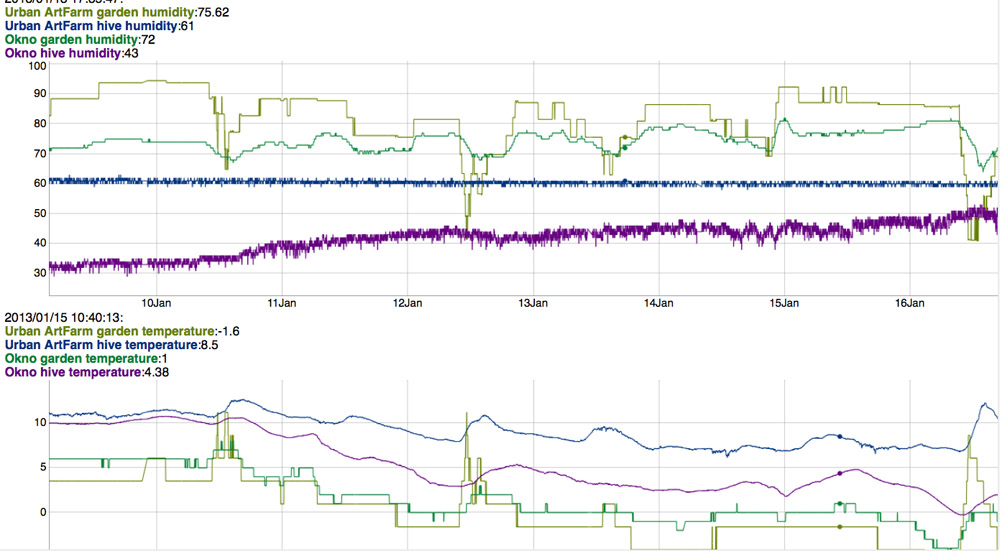
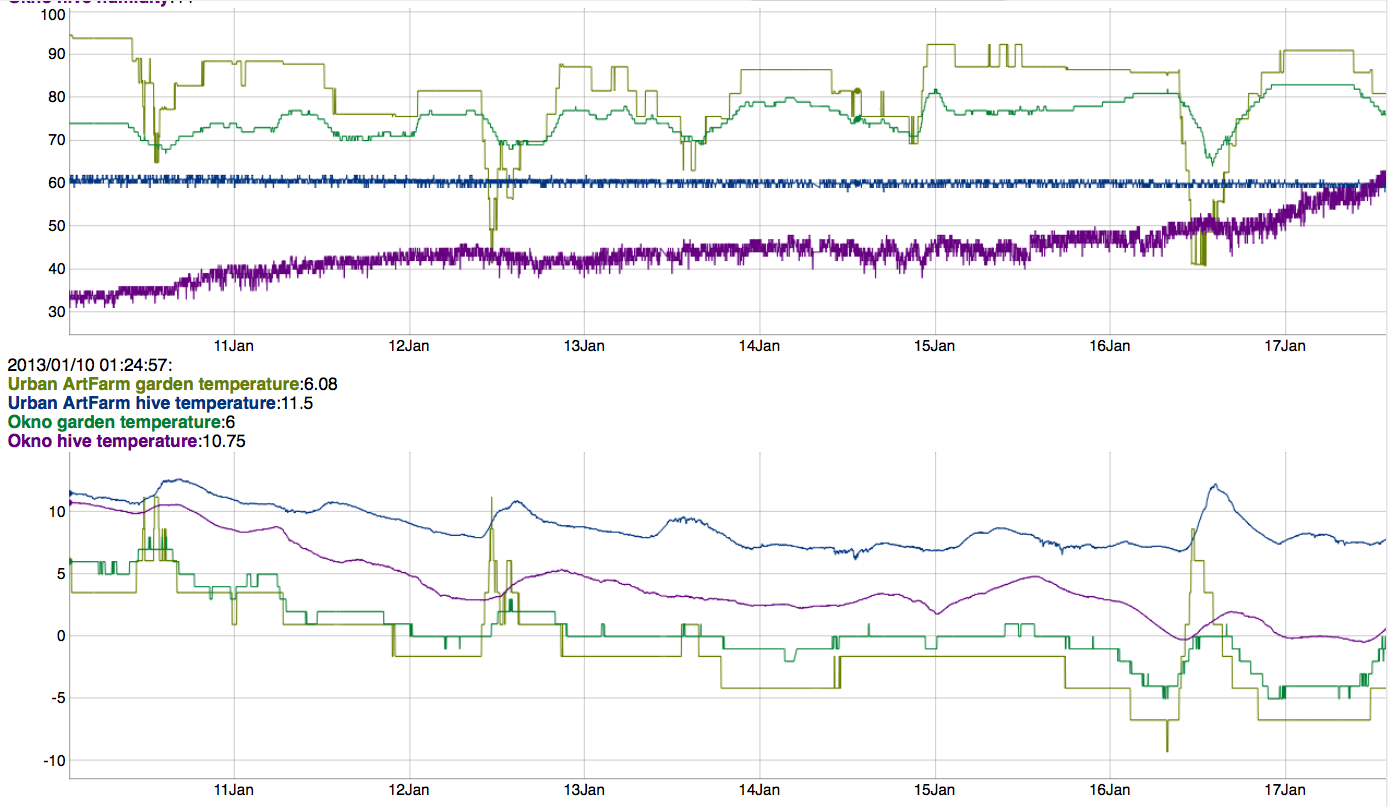
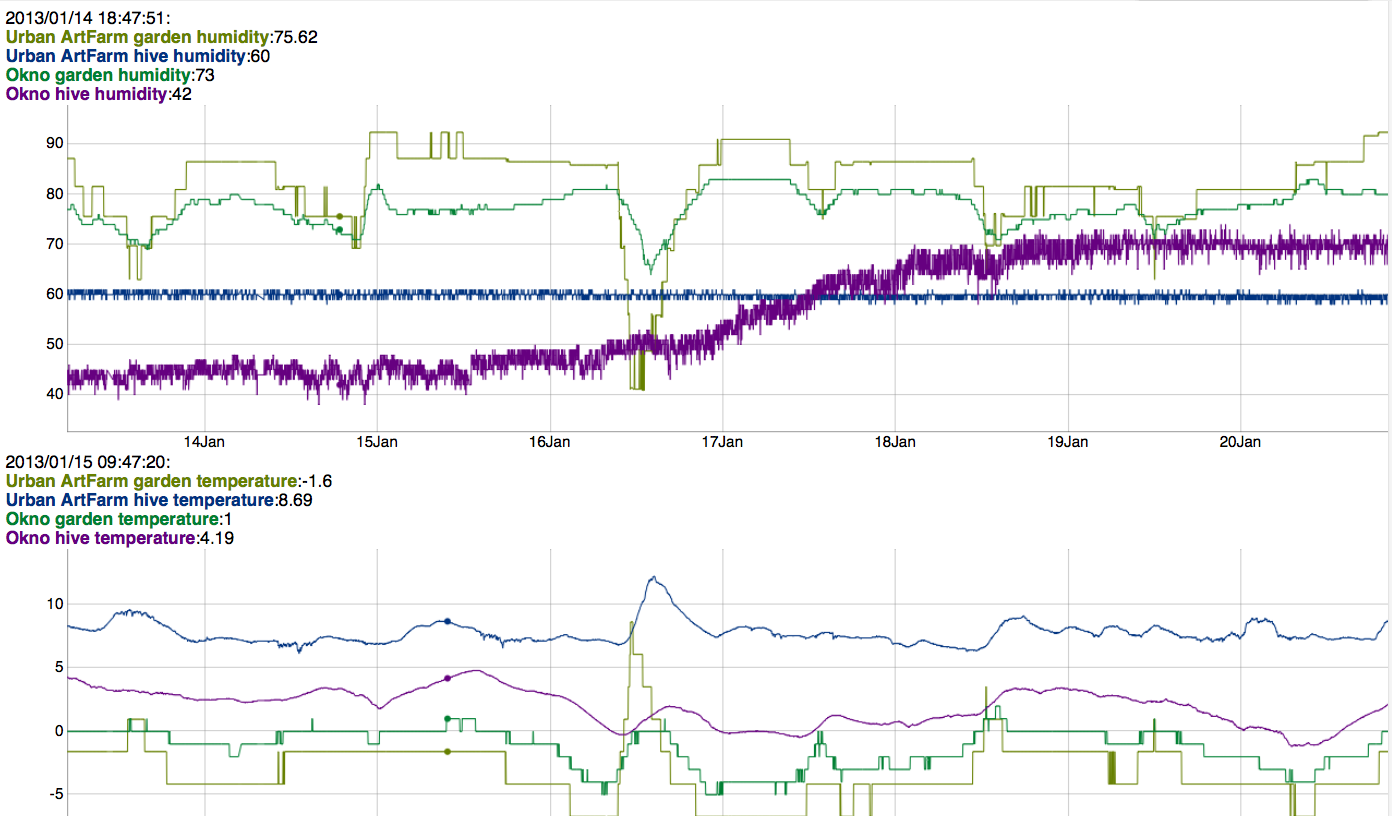
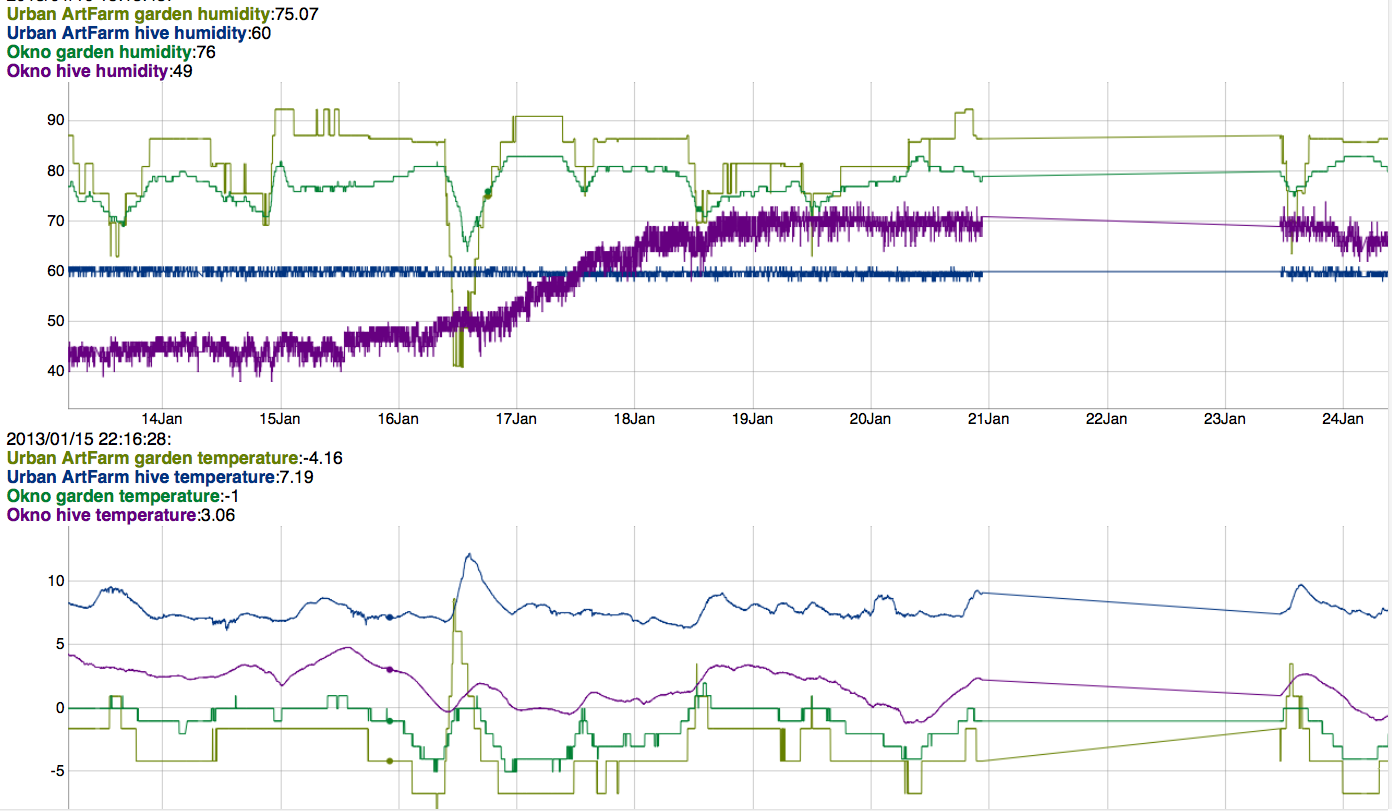
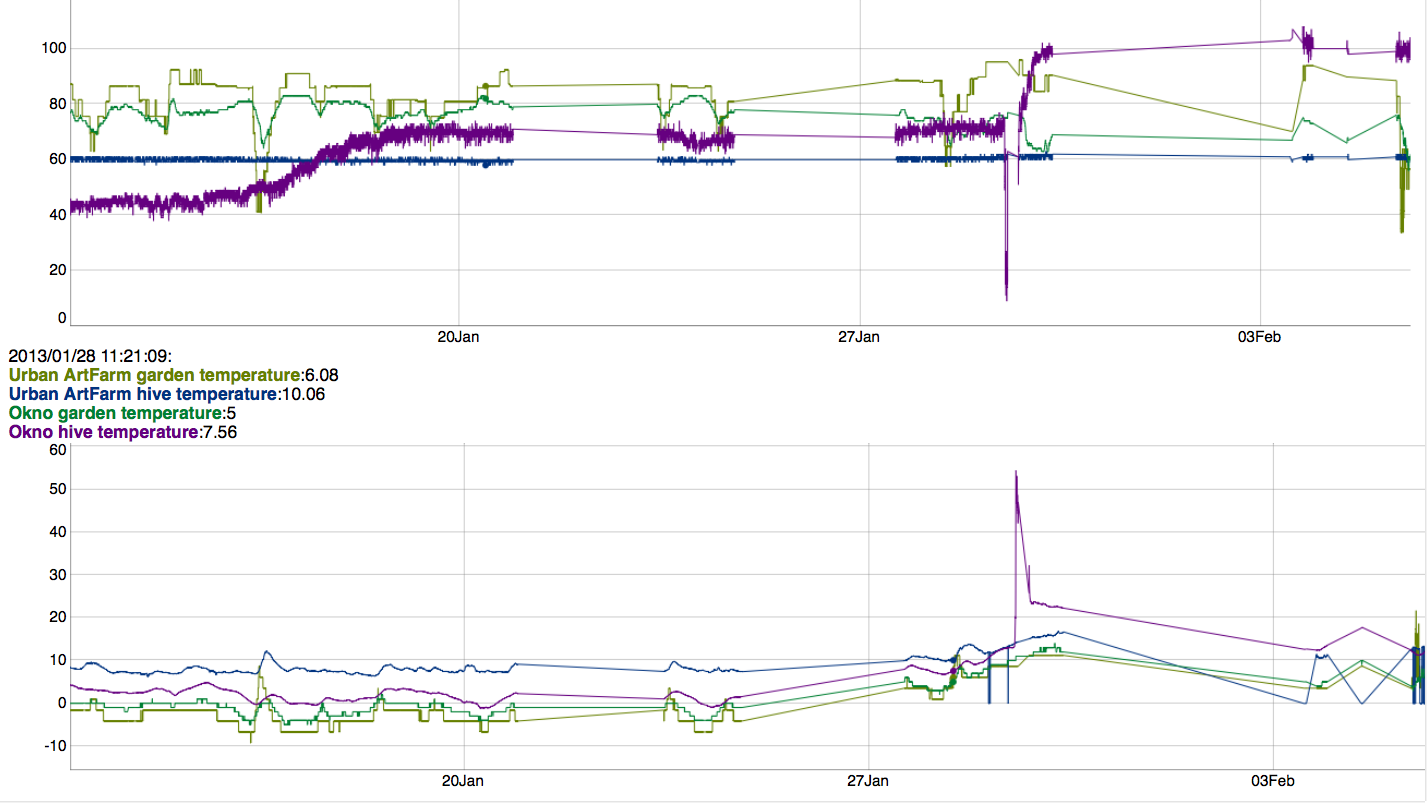
CO2
Do not completely seal the hive off. Always leave the varroa-drawer out. The bees produce moisture and CO2 and they will suffocate if there is not sufficient air circulation and ventilation.
monitoring data 2011
co2 gas sensor
SOUND RECORDING
piezo recordings with hive 03 at OKNO, Brussels, June 2011:
2 piezo sensors were inserted into the hive: one in between the comb frames, and one right in front of the entrance.
The piezo's were connected to a small mixing panel, in order to normalize the soundlevel.
In the video we can see rather well how the sound is connected to the bees' actions. Purpose is to experiment further with piezo sensors connected to the hive, and to make a soundperformance together with the bees.
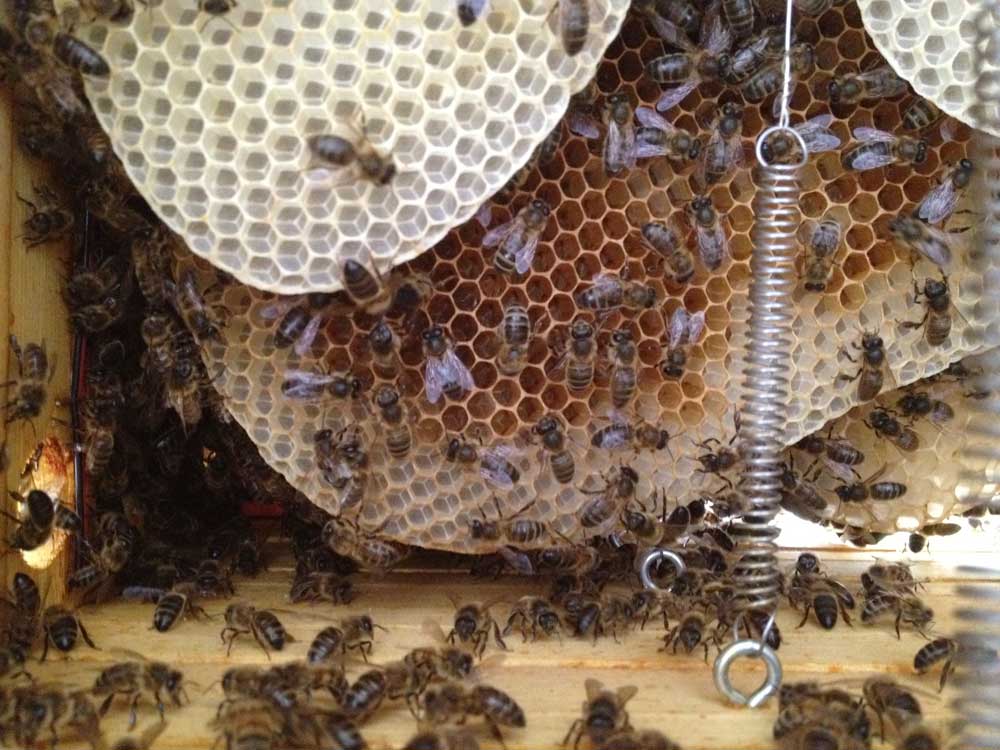
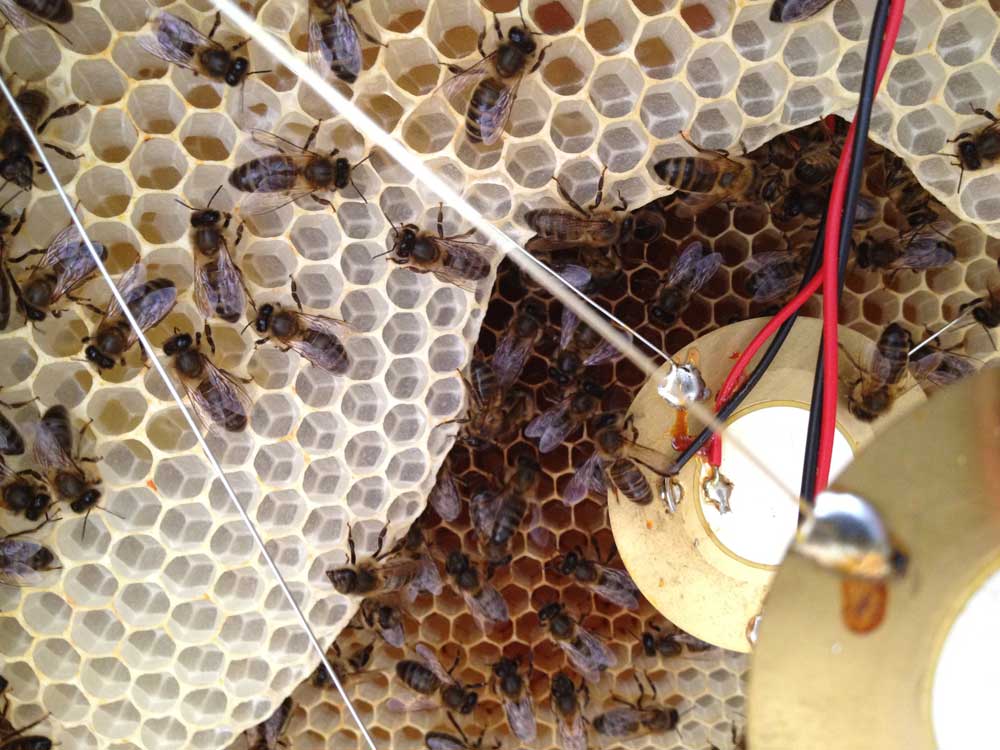
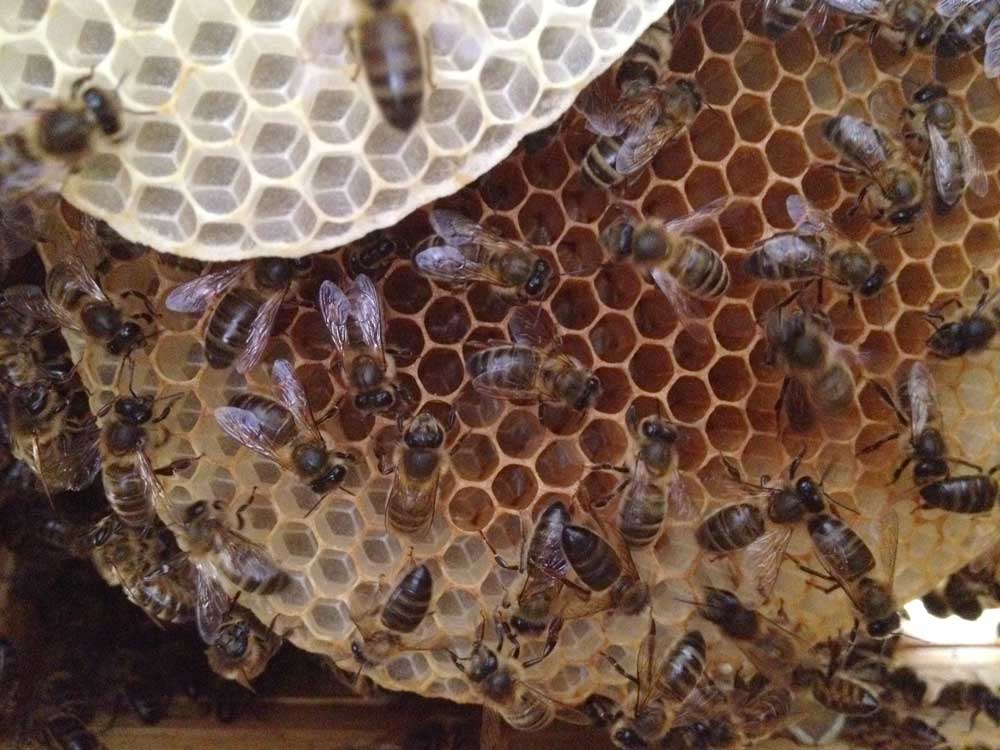
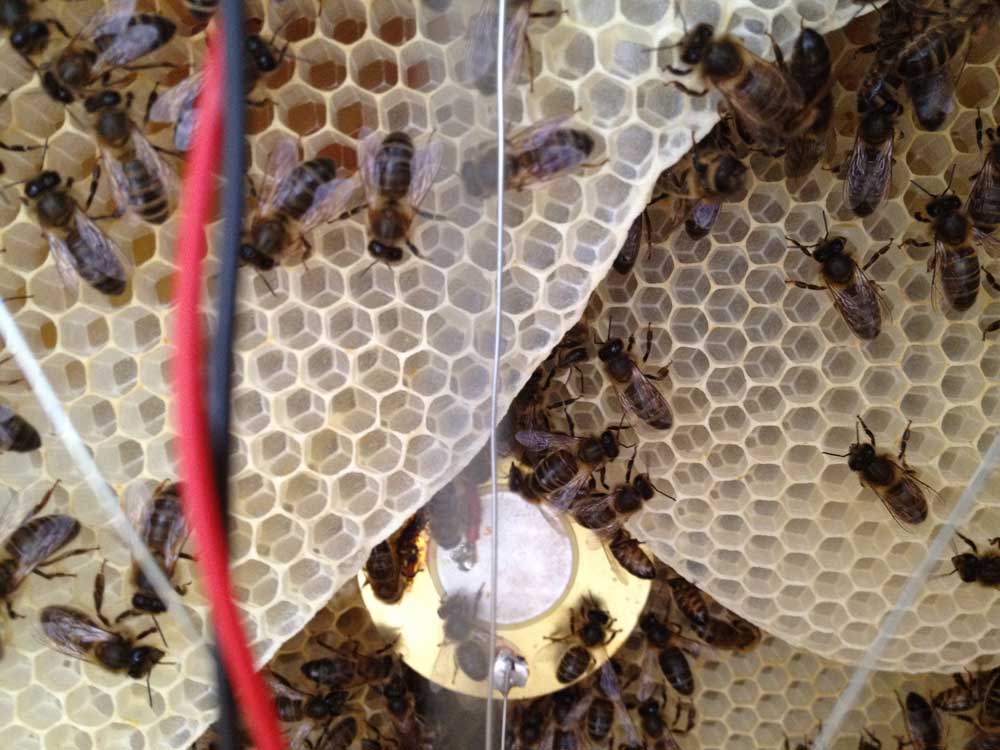
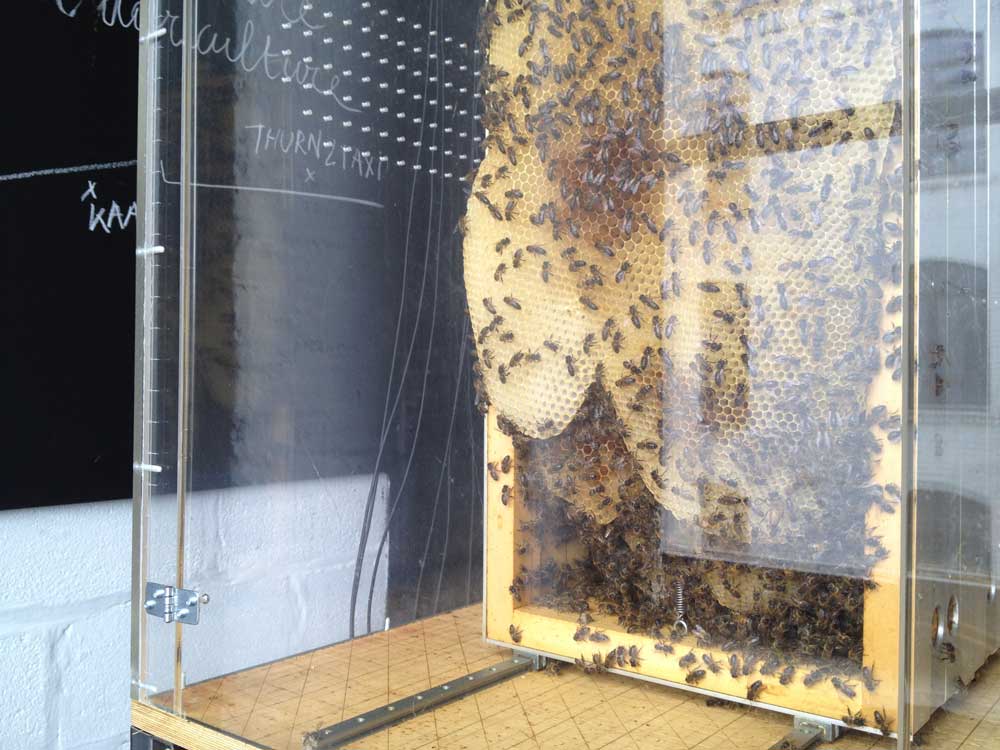
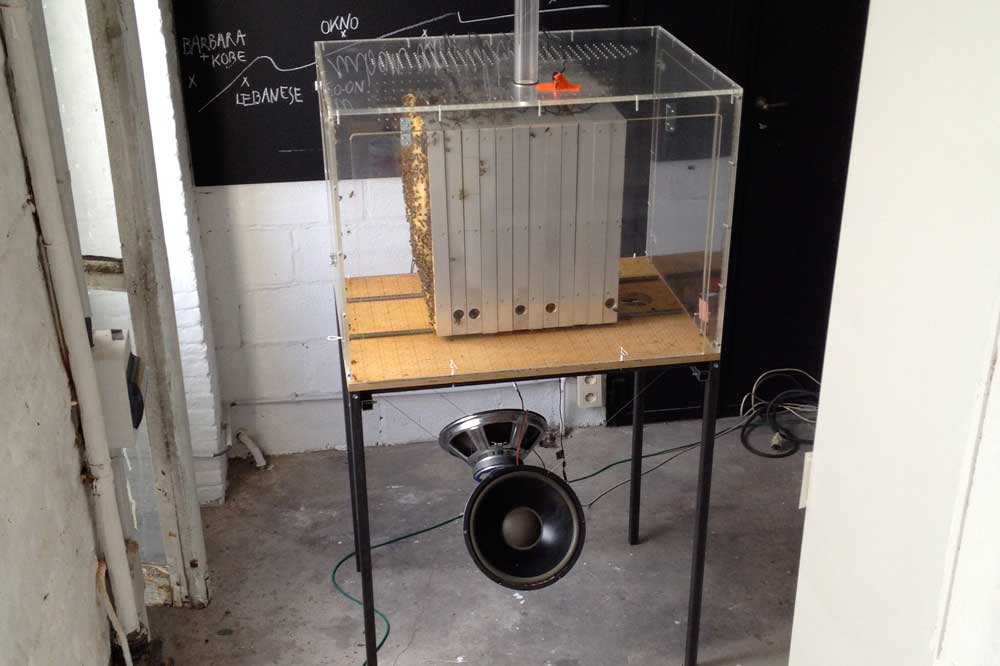
bees and piezo microphones
acoustic analysis of bee behaviour
SONIFICATION


Apis mellifera carnica - okno observationhive#03 ———– sonification of the recorded webcam-data in supercollider and processing, Joeri Bultheel
bees, blob recognition
bees, neural networks
From may 4th, 2011 till april 2012 beehive #03 at OKNO is monitored in a continuous way. Several sensors (t° inside/outside, humidy in/out and C02), but also 2 webcams at 15fps.
With the webcam movies we are doing some experiments on image/sound relation. The movie below is an excerpt of a concatenation of time-fragments over the bee colony season. The total movie is 4hours and 30 minutes, and documents the building of the nest from the moment the colony was put into the hive.
Now we are trying to find a sound which represents the volatility and the lightness of the bees, a sound which respects the bees behaviour.
We are trying some sonification patches in a neural networks supercollider patch, opposed to a patch that works with blob recognition an where the image/sound relation is more obvious.
Testing the sonification of the bee colony behaviour in Supercollider: [see image] a neural networks-patch, in which the visual information from Processing determines which pattern-sequence of the four sequences stored in the connection-weights is being played. In a later stage of the project certain visual states would also be able to trigger a certain amount of noise into the connection-weights to create novel patterns based on the stored ones. The incoming visual data would determine what sequence is being played, how much it differs from the original one (by perturbation of the connection-weights through the use of noise) and also when the current changed network is skeletonized (is considered to be the actual new connection-weights-structure ). In this way an ever-changing, not-too-direct musical production mechanism controlled by the visual data of the bees can be realized. Communication between Processing (openCV) and SuperCollider is done by using OSC.
MAPPING ELECTROMAGNETIC FIELDS
Electromagnetic fields can have adverse effects on living organisms – honeybees are especially sensitive.
Although urban environments provide beneficial habitats for bee colonies, the electromagnetic field concentrations can disturb the bees’ orientation and communication capabilities. To assist city bees with this issue, participants can work on an interference free foraging map.
Results of 12/12/2011-walk (5 walkers, 5 devices) in the garden of okno: Again wide band high frequency intensity.

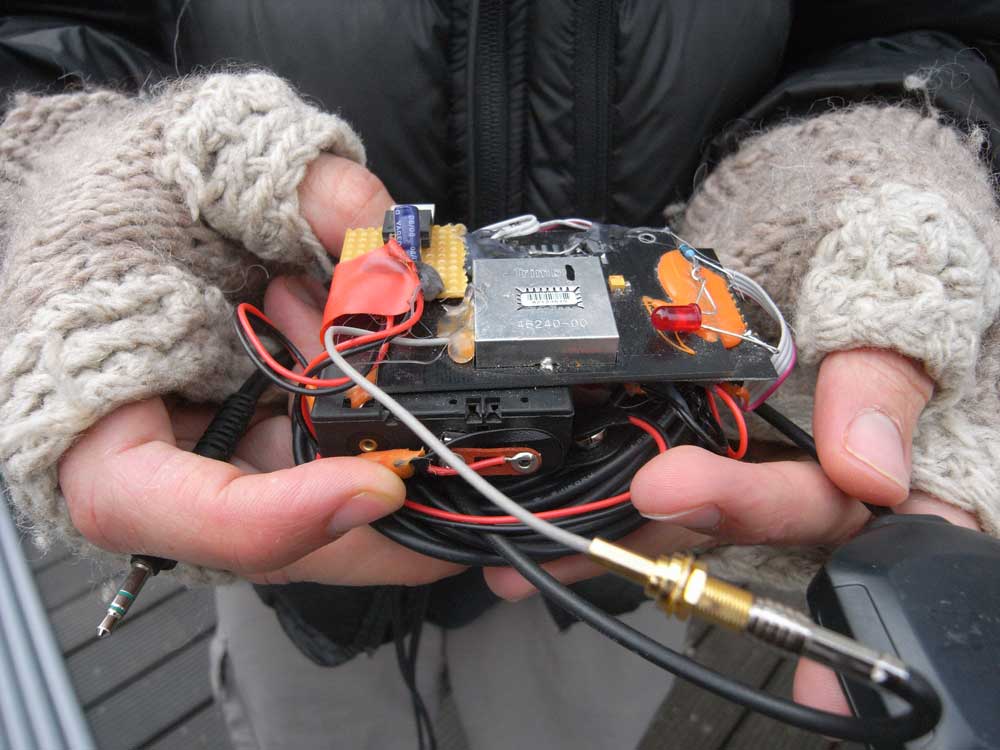
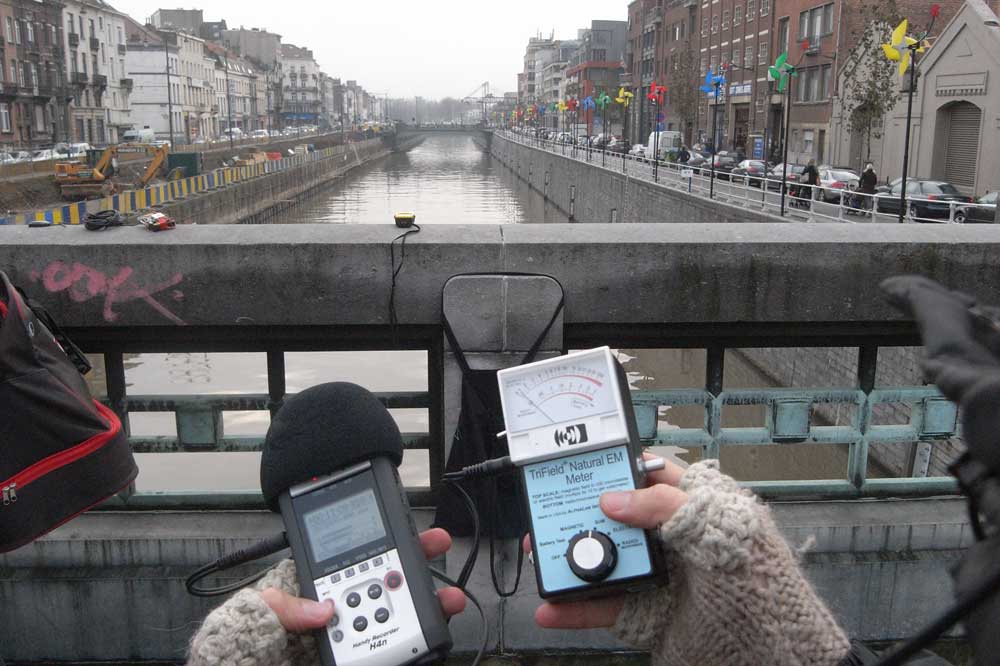
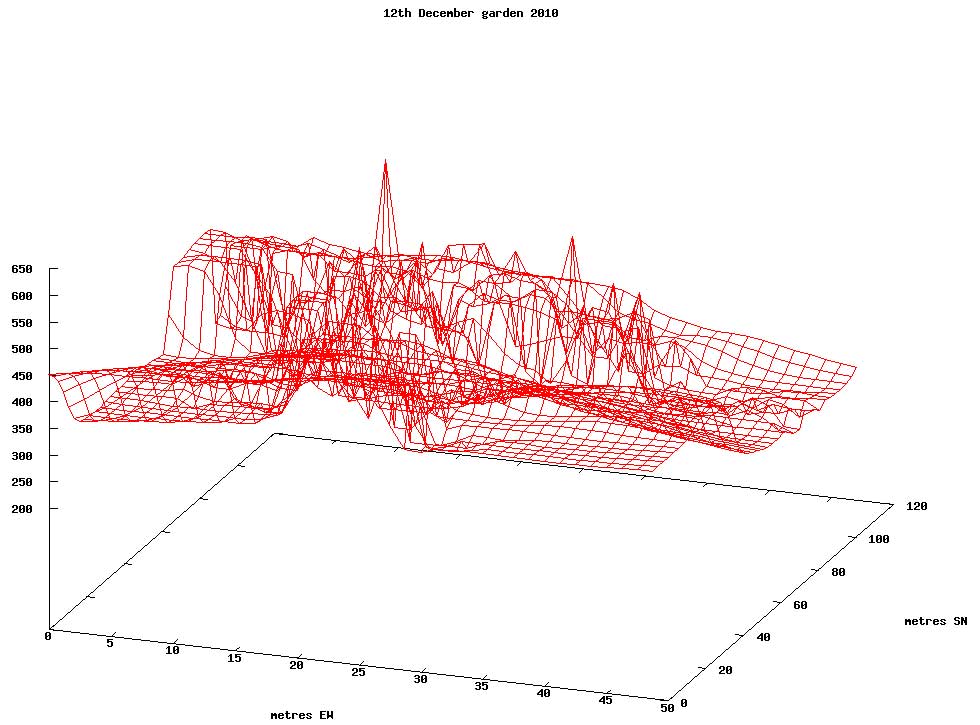
visualisation of the electromagnetic fields in the okno garden Martin Howse, http://www.psychogeophysics.org
Artwork : Gesamtkunstwerk
the Transparant BeeHive : Stories from the Drying Room
An OpenStructure observation hive displays the organisation of the bee community and the collective decision making among bees.
In “The Transparant Beehive or Stories from the Drying Room” the city honeybees are the main performers.
As a special implementation of environmental sensing/probing, we worked at a transparant monitoring installation. The Bee Monitoring installation probes deeply within a beehive and displays in realtime sound the evolution of the life in the hive.
[preliminary: transparant bee archives]
the Corridors project : social artwork, Gesamtkunstwerk
The Transparant Beehive is an entire part of the Corridors Project.
The Corridors project is inspired by the flight routes of the bees, and by looking at where they are going and what they are bringing back.
It is remarkable to see how a bee population functions and evolves, very much in accordance to the human activites we are developing around them: gardening and doing (urban) agriculture.
The production of honey is different related to the flowers we grow, the plants we like, the garbage or pollution we produce. So bees are very responsive to the different biotopes that we share, they are considered to be good bio-indicators. Though we seem to have rather few insight into what constitutes the diversity of our surrounding living place, and that's something we want to research on a deeper level.
In previous projects we developed different tools for identifying the specificity and relatedness of the changing assemblages of plants, animals, insects, reptiles, and related human activities. Adding new sensor networks to our Connected OpenGreen distributed garden database, and gathering the audiovisual data with our annotation database Padma/Pandora, we hope to portray the surround Canal Zone in Brussels, as it is changing over time into a continuous productive urban landscape. It is a diverse area where a lot of activities, from accidental nature to collective and community gardening and urban agriculture, develop between the industrial buildings, office zones and living areas.
With this project CORRIDORS, in which city honeybees play the leading role, we want to research how the sustainability of cities can be increased in the future, and how citizens can be actively involved.
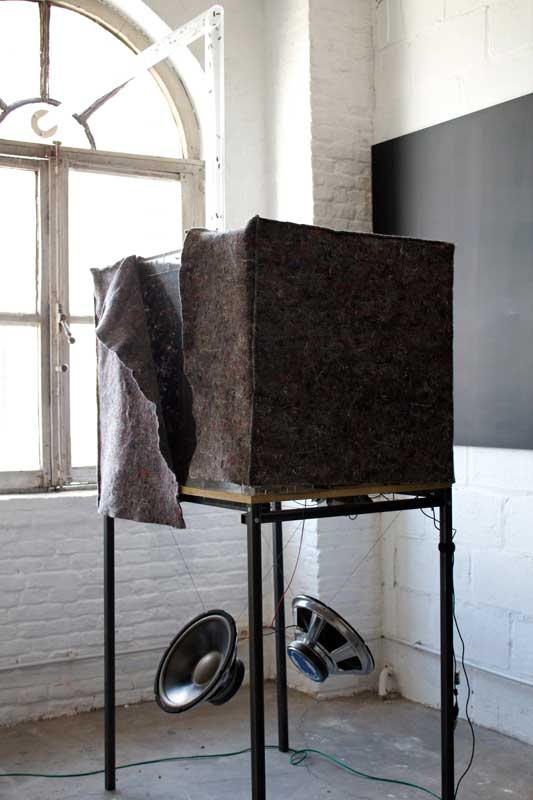
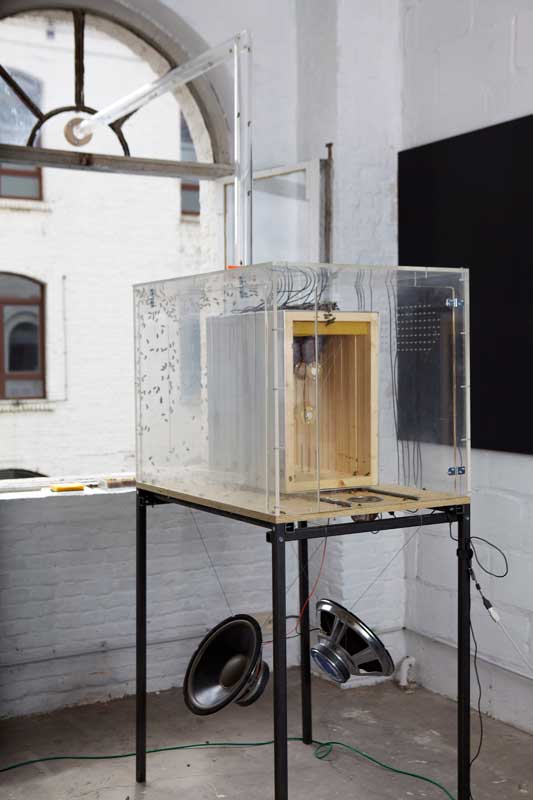
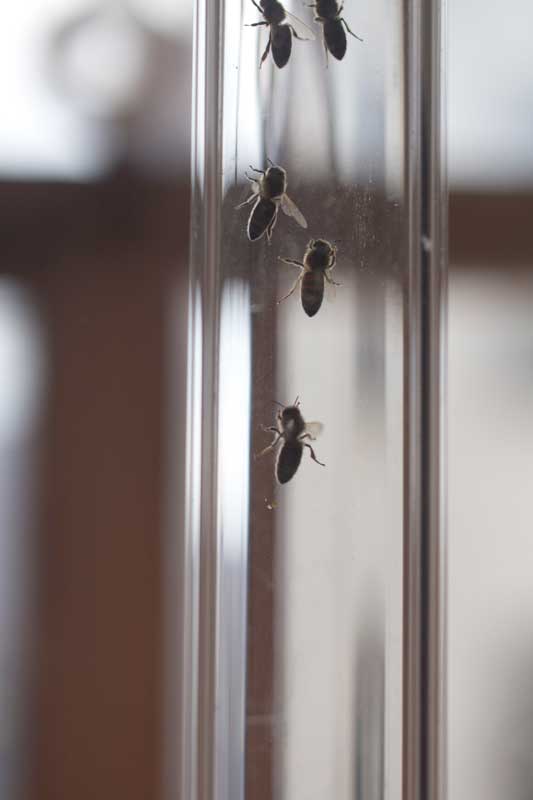
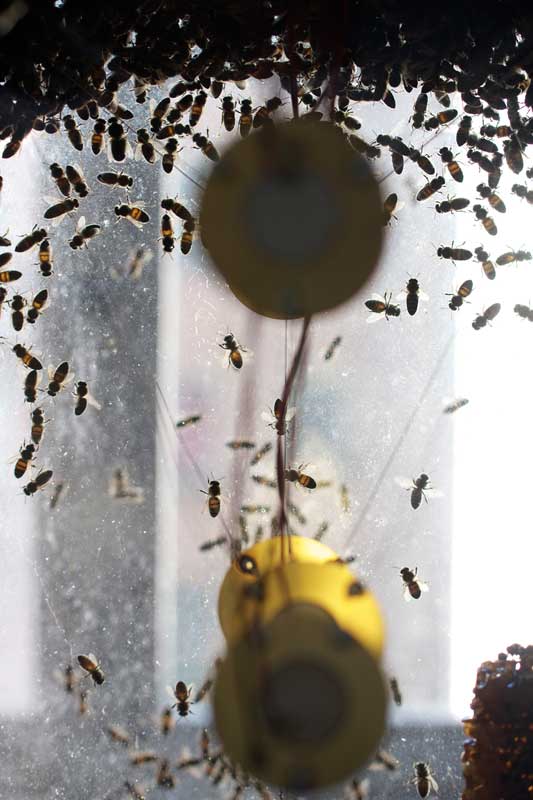
http://padma.okno.be/Vt3myazz/00:02:26.000-00:02:51.000
http://padma.okno.be/Vt3myazz/00:02:55.000-00:03:48.000
Concretely, we put forward ecological CORRIDORS in urban environments as a new medium of social sculpture, a Gesamtkunstwerk that relies on the creative participation of many.
Corridors are ephemeral living structures in the form of green spaces connected through animal life (such as bee colonies). They are set up and maintained by urban communities to regenerate areas of the city, particularly areas which are subject to social and urban stress. Corridors are here seen as art works that contribute to social cohesion and sustainability by raising awareness and minimizing resource waste.
Ecological corridors rely partly on methods of urban agriculture, guerilla gardening, ecological management and social anthropology. Corridors can also make good use of avant-garde technologies, so that such projects become experiments on the edges of art, science and technology.
With the “bee-mapping” of the connected biotopes around the Brussels canal into a Corridor, we hope to come to a new but sensitive representation of our own living environment, not only providing insight in the constantly changing conditions we live in, but also bringing forth a new material from which new ecologial artworks can be created, be it installation, performance, media art or literature…
Together, the research becomes a fragmented but growing territory where everyone can connect and contribute to, and where slowly relationships and patterns emerge from. We want to work with creative ways to raise awareness, not only about our shared surroundings, but also about the ways we can spread a change that makes sense with a wider than anthropomorphic view only. In a world we share. Guided by social insects, the bees, following them on their flights across the land and cityscapes we live in.
We see this - in the OKNO tradition - as a multifaceted work made over time by artists, technicians, and scientists together, but also involving an audience, by now skillful with ICT and interested in ecological and urban issues.
the importance of bees in the corridors
- introduction of bees/honey ⇒ stands for transformation in habits, in society
- honey (analysis) ⇒ can give diverse info on the habitat, on the available plants and food (urban agriculture) in the perimeter of the hive (connected OpenGreens)
- honey analysis ⇒ compare the polluants in the different OpenGreens of the corridor
corridors as a social sculpture
- social sculpture ref. Beuys: The idea being that every decision you make should be thought out and attempt to make or contribute to a work of art which in the end is society. This point of view invites followers to humble themselves by realizing that they are an important part of a whole not only an individual. (link with the honeybee colony)
- corridors as a social sculpture ⇒ community, bottom up (the social, cultural and political function and potential of art) occupy public space
- potential of art to bring about revolutionary change (Beuys) transformation (metaphore = honey)
- effect environmental and social change through this project
- participating gardens ⇒ active creative expressions of the participating inhabitants, communities, neighborhoods
- social awareness raising : human activity that strives to (re)structure and (re)shape society and the environment
- knowledger building of cities as complex ecosystems
corridors as artworks
- bee tracking & mapping : flightroutes as emergent behaviour (http://en.wikipedia.org/wiki/Emergence)
- the color & texture of pollen + wax
- alternative economies : honey & plants & vegetables as exchange for services
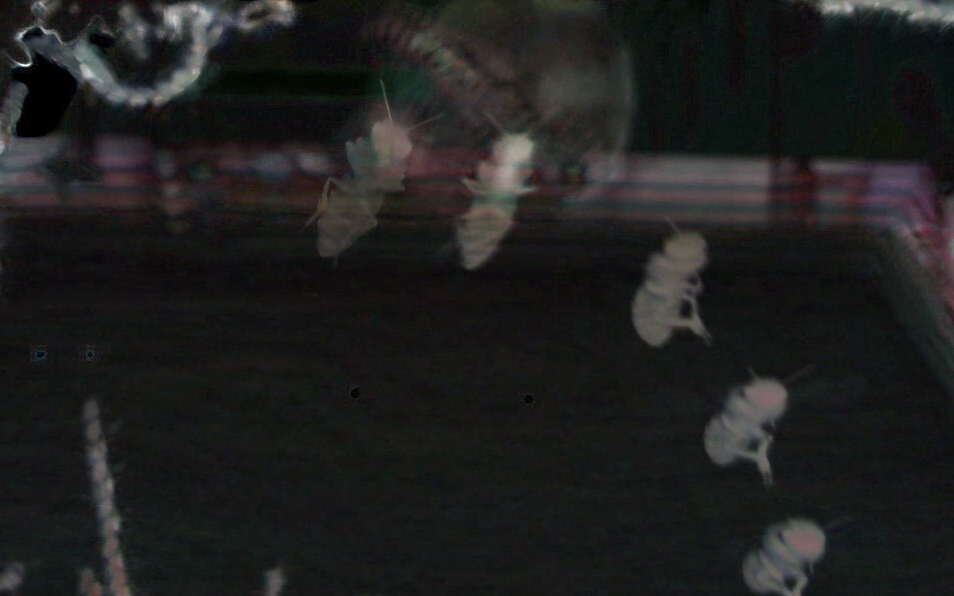
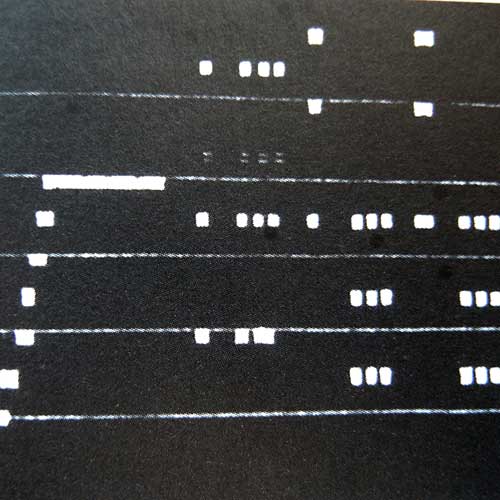
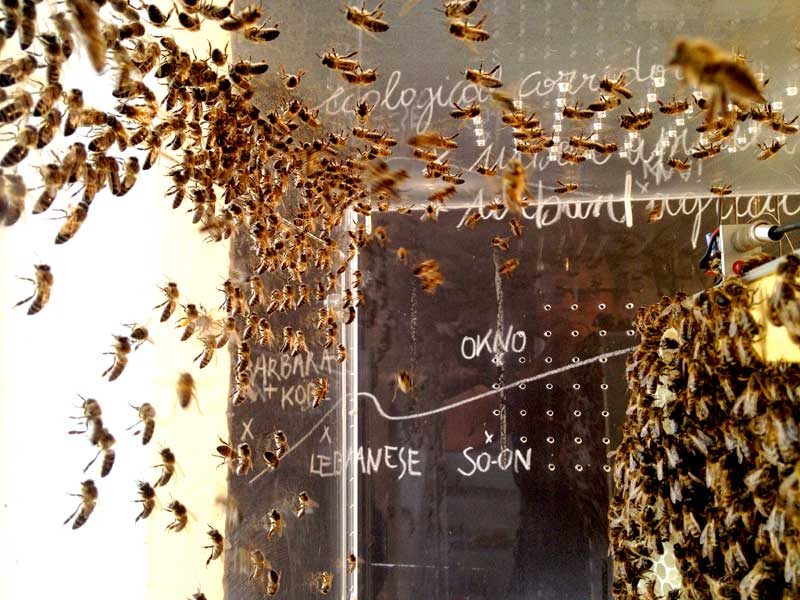
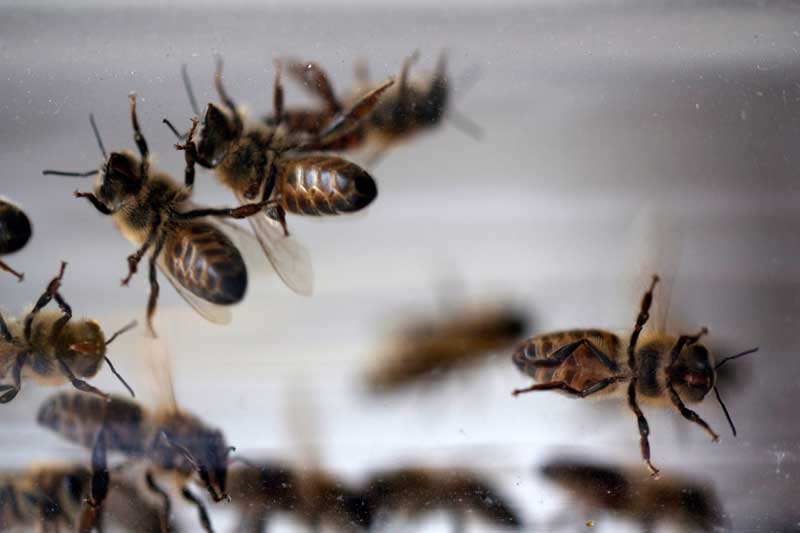

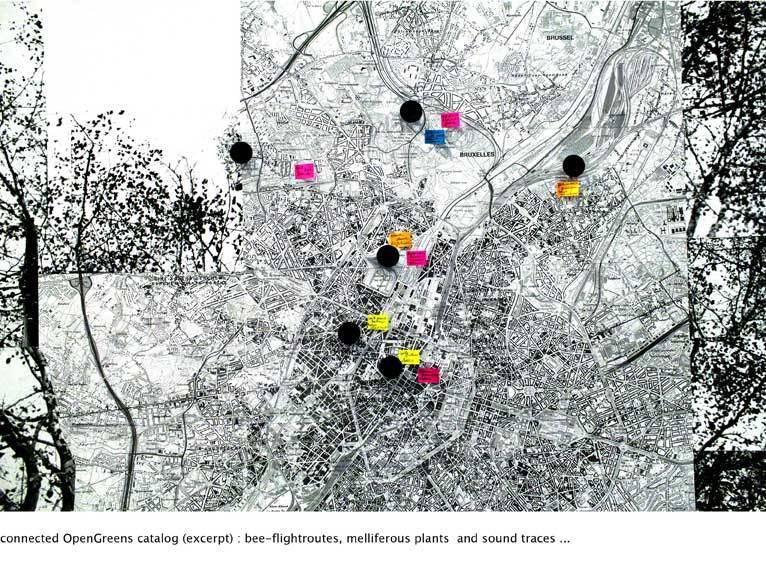
After a first technical monitoring approach (temperature + humidity inside/outside), representing the colony in relation to its environment,
it's important to research what exactly we can do more to monitor our city-environment via the intermediate of the bee colony.
ICT for the monitoring and mapping of the corridors
The project will develop the ICT components necessary to support the bottom-up emergence of ecological corridors in urban areas.
Several ICT technologies are crucial to achieve such corridors: Embedded systems, novel sensors, low energy computing, and sensor networks are needed for monitoring soil quality, plant growth processes, animal activity, pollution and the movement and interaction of people within the local environment. Mobile communication and geoinformatics are needed for aggregating sensory data and projecting it in real time onto maps. Complex systems analysis, low energy computing, and machine learning are needed for detecting patterns to allow prediction and the shaping of ongoing social and biological processes, and novel user interfaces are needed to make embedded technologies accessible and usable without requiring sophisticated background or training. The project will be highly innovative because it opens up a new application area for a whole range of ICT technologies and because it generates deep challenges that will push the state of the art for each technology as well as their integration into a complex distributed system.
further monitoring of the city ecosystem by monitoring the evolution of the bee colony
research related to bee behaviour and bee senses
STUDY OF THE COLLECTIVE BEHAVIOUR
A superorganism is an organism consisting of many organisms. This is usually meant to be a social unit of eusocial animals, where division of labour is highly specialised and where individuals are not able to survive by themselves for extended periods of time.
The technical definition of a superorganism is “a collection of agents which can act in concert to produce phenomena governed by the collective, phenomena being any activity “the hive wants”, such as bees choosing a new nest site.
http://en.wikipedia.org/wiki/Superorganism
http://zool33.uni-graz.at/artlife/bee
HIVE TEMPERATURE
accurate temperature inside hive: moving of the bee-blob/nucleus inside of the hive (very important in winter - heath camera? calculating the hue values of pixels on webcam images?) thermographic camera heath sensitive camera to spot the 'heather bees'
PHEROMONE BASED ACTIVITY
- pheromones (alarm, brood, stress, drones)
- pheromones (queen)
- antennae (vibrations)
HIVE AND COLONY WEIGHT
Weight of the hive : hive filling up with honey. The purpose is to build a low cost scale for monitoring the weight of the increasing honey over the foraging season. In the meantime we can also monitor the growth of the colony.
A nice DIY example can be found here:
the portable hive scale
Bee-counter: number of bees flying in/out - landing and take-off of the bees on the landing strip before the flighthole (theremin? Aluminiumfoil?)
instructables bee counter
how bees land on a surface
DATA RETRIEVED FROM BEE-VISION
The bee's eyes, like those of other insects, differ greatly from human eyes. They consist of a pair of compound eyes made up of numerous six-sided facets. They also have three simple eyes. Despite this, their vision is believed to be sharp for a distance of only about 1 m (3 ft.).
Bees, however, are capable of seeing ultraviolet light, which is invisible to humans. The bee is capable of navigating by ultraviolet light, which even penetrates cloud cover. Honey bees (Apis mellifera) also use the sun as a reference point to communicate to other bees the angle of flight to be followed to arrive at newly discovered nectar-bearing flowers.
Compound eyes are composed of a great number of facets. Below each facet is an individual light gathering structure called an Ommatidium. The facet on an ommatidium acts as a cornea. Like our own cornea this serves to focus the light. The focused beam moves through a crystalline matrix and shines on Retinula Cells which convert it to an electrical impulse. This impulse can be carried to the brain for interpretation. The brain is able to put all these tiny pictures together into a mosaic. While a compound eye cannot register the fine detail of our own eyes, it is particularly good at detecting and following motion.
B-eye
Responses to light under varying magnetic conditions in the honeybee, Apis mellifera
how-flowers-appear-to-bees
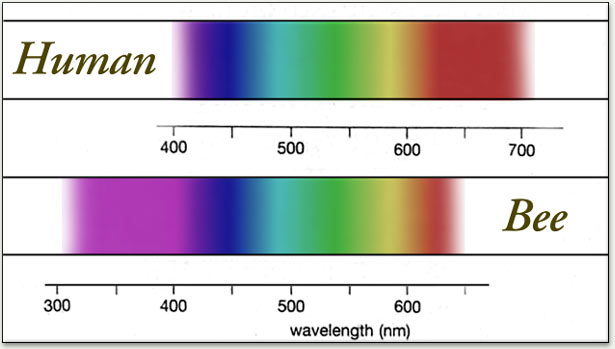
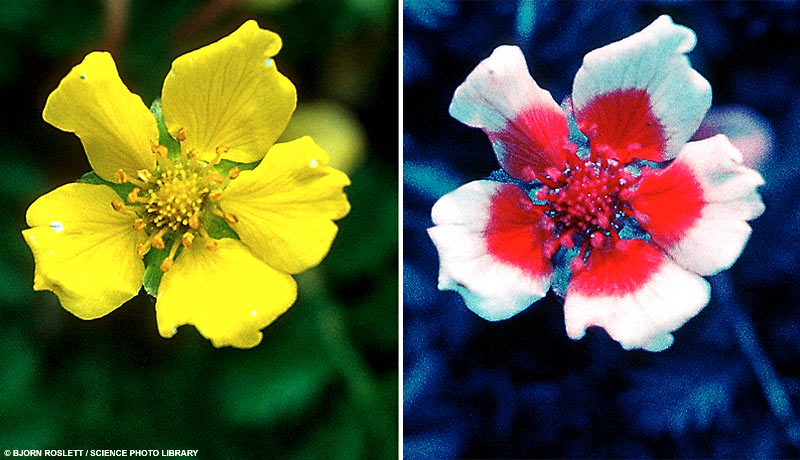
Flower colour is of great importance in various fields relating to floral biology and pollinator behaviour. However, subjective human judgements of flower colour may be inaccurate and are irrelevant to the ecology and vision of the flower's pollinators. For precise, detailed information about the colours of flowers, a full reflectance spectrum for the flower of interest should be used rather than relying on such human assessments.
FReD: The Floral Reflectance Database — A Web Portal for Analyses of Flower Colour
bees and face recognition
beyond visible
plants and bees, how to make photos with UV filter
LANGUAGE OF THE BEES: VIBRATION BASED COMMUNICATION
Early signs of swarming can be detected by making sound recordings and analyse them later on a PC using Audacity or other software for spectrum analysis.
If you want to build a real-time spectrum device,consider an arrangement of analogue filter banks, comparators and LEDs. The dominant frequency is approximately 220-240Hz followed by the first harmonic at 440 – 480Hz. According to literature this corresponds to the wing-beat frequency which varies depending on whether the bee is flying or stationary. Moreover, accordingly to unconfirmed reports, a newly hatched bee will have a higher wing-beat frequency due to incomplete forming of the wings.
Queen piping is an interesting sound; some of the recordings place in the 400Hz – 4KHz range. Sounding much like a duck.
http://www.beehacker.com/wp/?p=240#comments
Scientific American article on the Language of the Bees
Maybe it is good to find out more about how practically these sound experiments with bees (infrasonic mostly it seems) were done.
A note: in our overview we should maybe also apart from hearing start with a section on “how do bees generate sound”?
THE DANCING BEES
Waggle and other dances tocommunicate.
In the hive the steps and waggles of a successful forager correlate closely with the exact distance and direction from the nest to the resource she has discovered. For the next two decades, most scientists believed bees relied primarily on these silent movements to communicate. In the 1960s this view was challenged in two ways.discovered that the dances were not silent after all. As the bees dance, they emit faint low-frequency sounds, and researchers [Wenner and Esch] suggested that the sounds might play a critical role in the bees' communication. The use of sounds, they reasoned, might account for the bees' ability to communicate effectively in the complete darkness that prevails inside their nests.
bee dance
research related to the bees and their environment
FLIGHTROUTES
Visualize the flightroutes of the bees in their foraging fields. Research the emerging green corridors in the city, connected by the bee colonies.
RFID chips
grant for bee tracking
AIR POLLUTION
Because bees carry an electrostatic charge, and can attract other particles, the same techniques of melissopalynology can be used in area environmental studies of radioactive particles, dust or particulate pollution.
http://en.wikipedia.org/wiki/Honey
MEASURE THE HOURS OF SOLAR ACTIVITY
Nectar is an ecologically important item, the sugar source for honey. It is also useful in agriculture and horticulture because the adult stages of some predatory insects feed on nectar such as almost all solitary wasps. In turn, these wasps then hunt agricultural pest insects as food for their young.
Nectar secretion increases as the flower is visited by pollinators. After pollination, the nectar is frequently reabsorbed into the plant.
The prediction of when flowers bloom (nectar flows) is more accurately estimated by counting the number of sun-days than by looking on a calendar. Solar activity also indicates how many days bees have available to forage for honey.
http://en.wikipedia.org/wiki/Nectar
Also the soil composition might be important for the amount of nectar flow.
HONEY & POLLEN ANALYSIS, MAPPING THE BIODIVERSITY OF THE ECOSYSTEM
http://en.wikipedia.org/wiki/Melissopalynology
http://en.wikipedia.org/wiki/Pollen
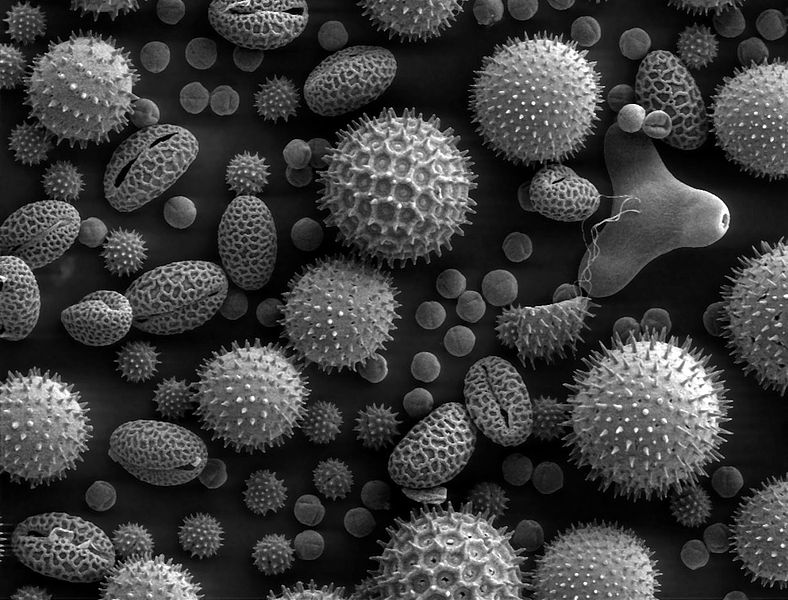
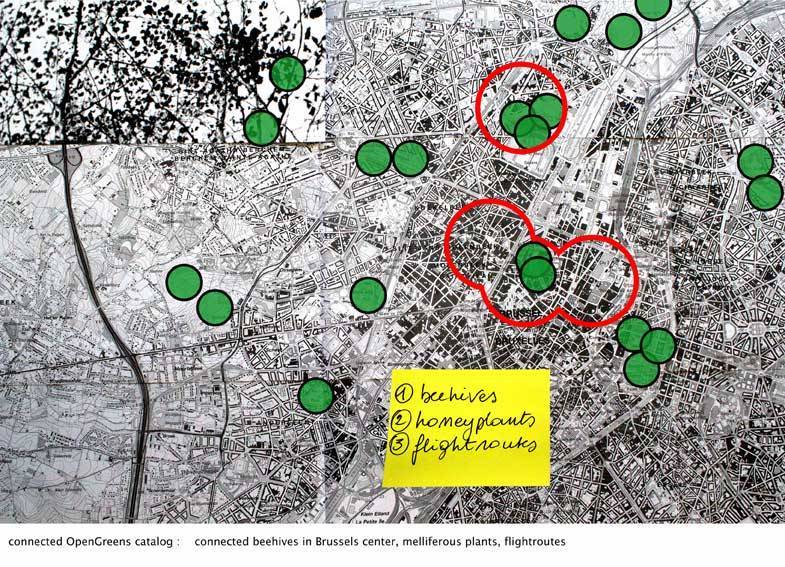
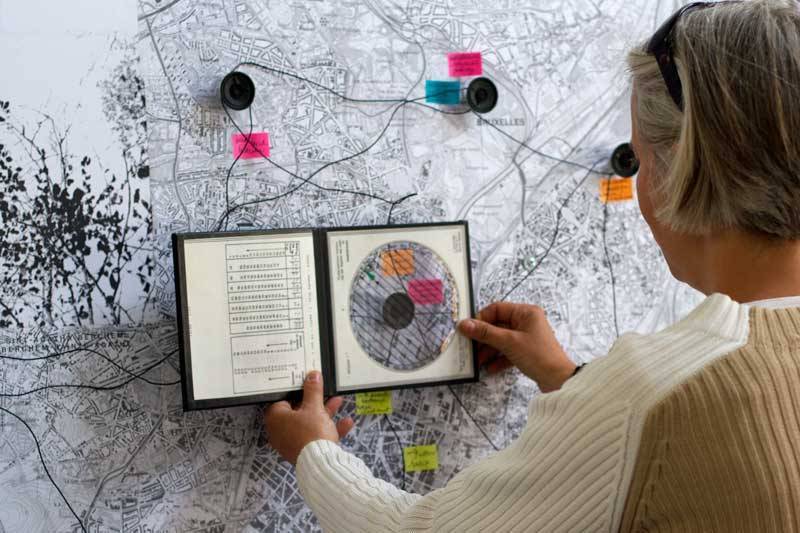
Melissopalynology is the study of pollen contained in honey and, in particular, the pollen's source. By studying the pollen in a sample of honey, it is possible to gain evidence of the geographical location and genus of the plants that the honey bees visited, although honey may also contain airborne pollens from anemophilous plants, spores, and dust due to attraction by the electrostatic charge of bees.
FURTHER ANALYSIS OF THE VIDEODATA COLLECTION
monitored hive, webcam part 1
monitored hive, webcam part 2
Custom Software Video Analysis
Since may 4th 2011 we record at 15fps with 2 webcams, and we will continue the recordings till the start of the new bee season beginning of march.
This will give us a total of 10 months of recordings, which we will process as follows:
Videos: 160x speed-up ⇒ 24h becomes 9 minutes
1 month = 04:30 h ⇒ 10 months will be 45 hours.
Once we have processed all video material in 45 hours, we’ll run a last change-of-speed process to finish with a total of 24 hours. This means that we will finally represent the colony’s season (10 months) in the timespan of 1 day (24 hours).
A possible research of the images could include the relationship between the outside t° and the inside t° and the behaviour of the bees. With the start of the cold weather we discovered that the bees are not visible anymore on the outer comb-frame (the one closest to the camera). They go all to the inner comb-frames to form their ‘cluster’ for hibernation. Once the t° rises again, the bees spread over the different comb-frames.
Also the relation between the changing light density/frequency and the bee activity is a subject for research based on the video images.
analyse and recode the video images
- analyse stills
- analyse tekst, data – other input
- position in the image (bees)
- position in the garden (GPS OpenGreens)
- enlarge the image (or part of the image) to maximum resolution and scan each pixel’s brightness
- change brightness of pixels in realtime according available realtime data info
- the higher the — the faster the — or other relations between realtime signals
- render the invisible space of data flows, give it a structure, poetics and politics.
MORE TECHNOLOGY : ROBOT BEES
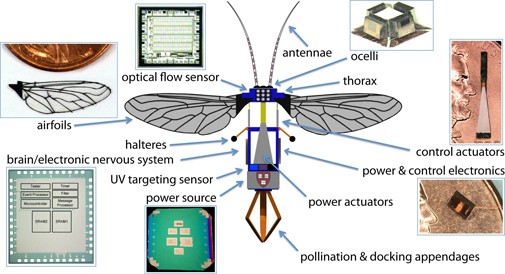
Inspired by the biology of a bee and the insect’s hive behavior, we aim to push advances in miniature robotics and the design of compact high-energy power sources; spur innovations in ultra-low-power computing and electronic “smart” sensors; and refine coordination algorithms to manage multiple, independent machines.
harvard robobees
MAKE - building a robotic bee
german robobee project, Freie Universität Berlin
Dissemination of the data and observations
- data on open platforms
- useful visualisations
- informative websites
- involving active/passive public participation in a later phase
BCN Bees
Workshop at University Barcelona and at the Apiary of the Science Museum (Castle of the three Dragons in Ciutadella Park).
Organized by BCN-CityLab.
This workshop offers the opportunity to work at the intersections of artistic, scientific and technological practices in the field of urban beekeeping. Urban bees are quality sensors of the city where we live but, how can we capture and decode all the information they provide? During these two days, we will build and install a kit of sensors on a hive from the Three Dragon Castle, in Parc de la Ciutadella to obtain data from the inside and outside of the hive. Later, we will analyze and visualize data from a scientific and artistic point of view.
This first meeting aims to be the beginning of a community process among people looking for a sustainable city and committed to multidisciplinary and horizontal research.
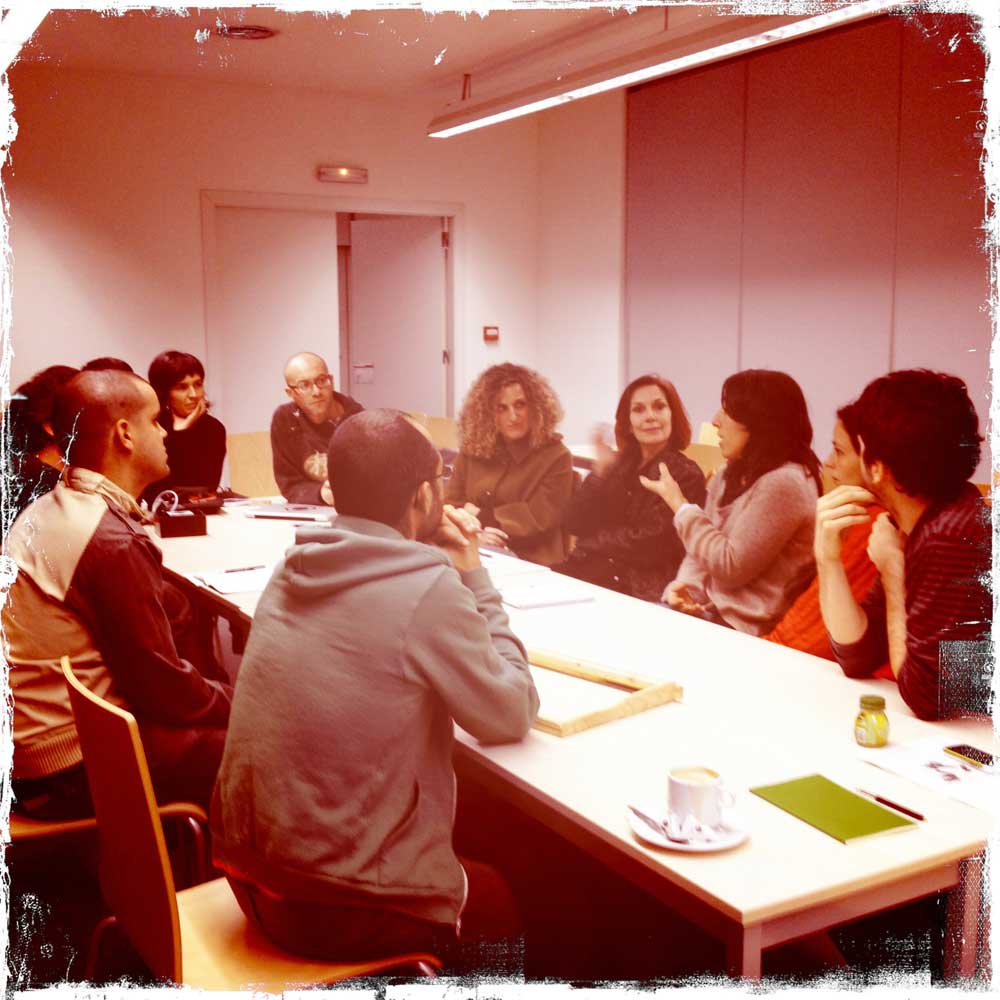
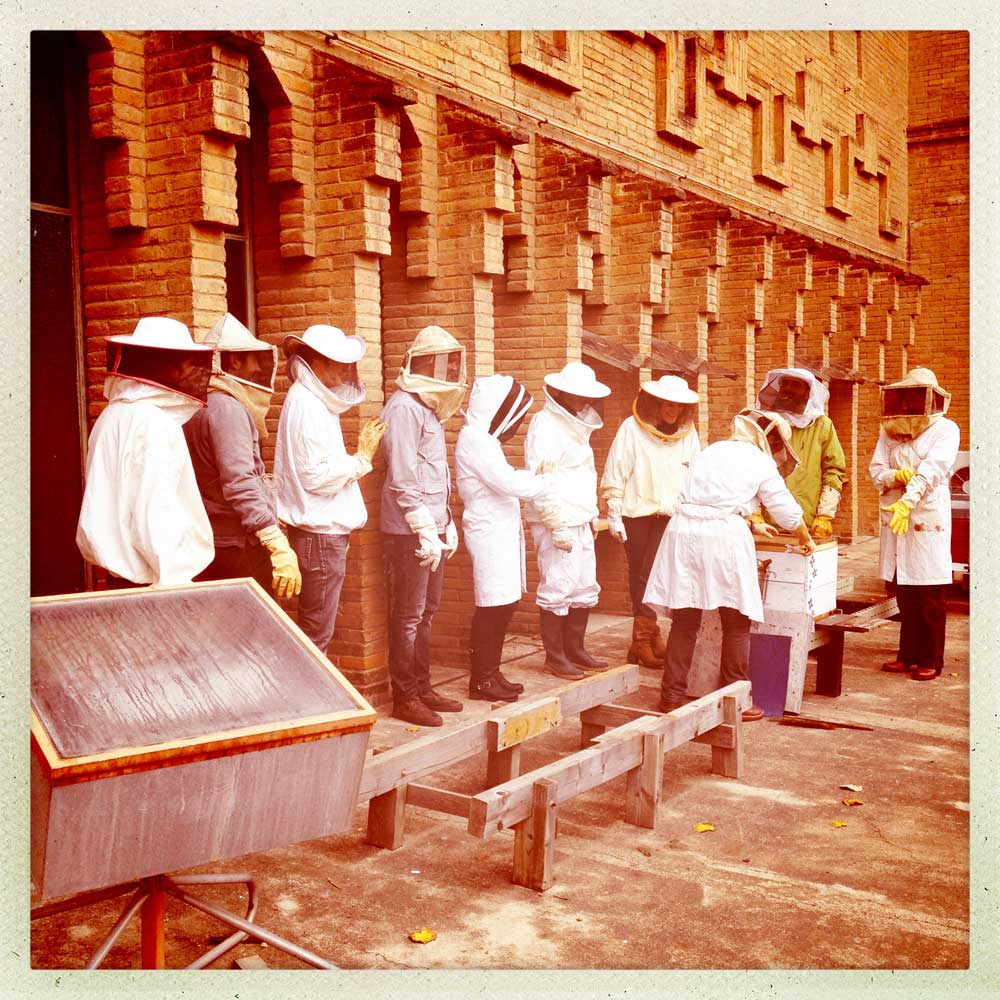
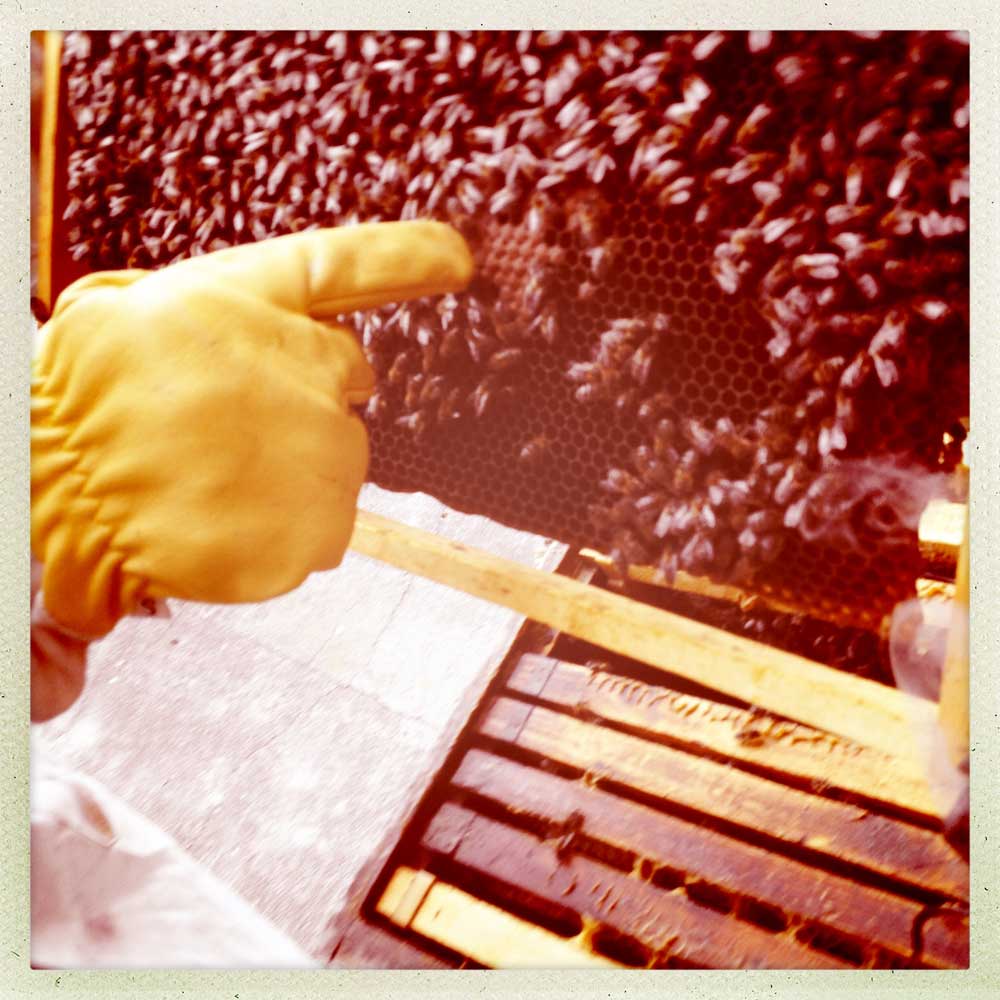
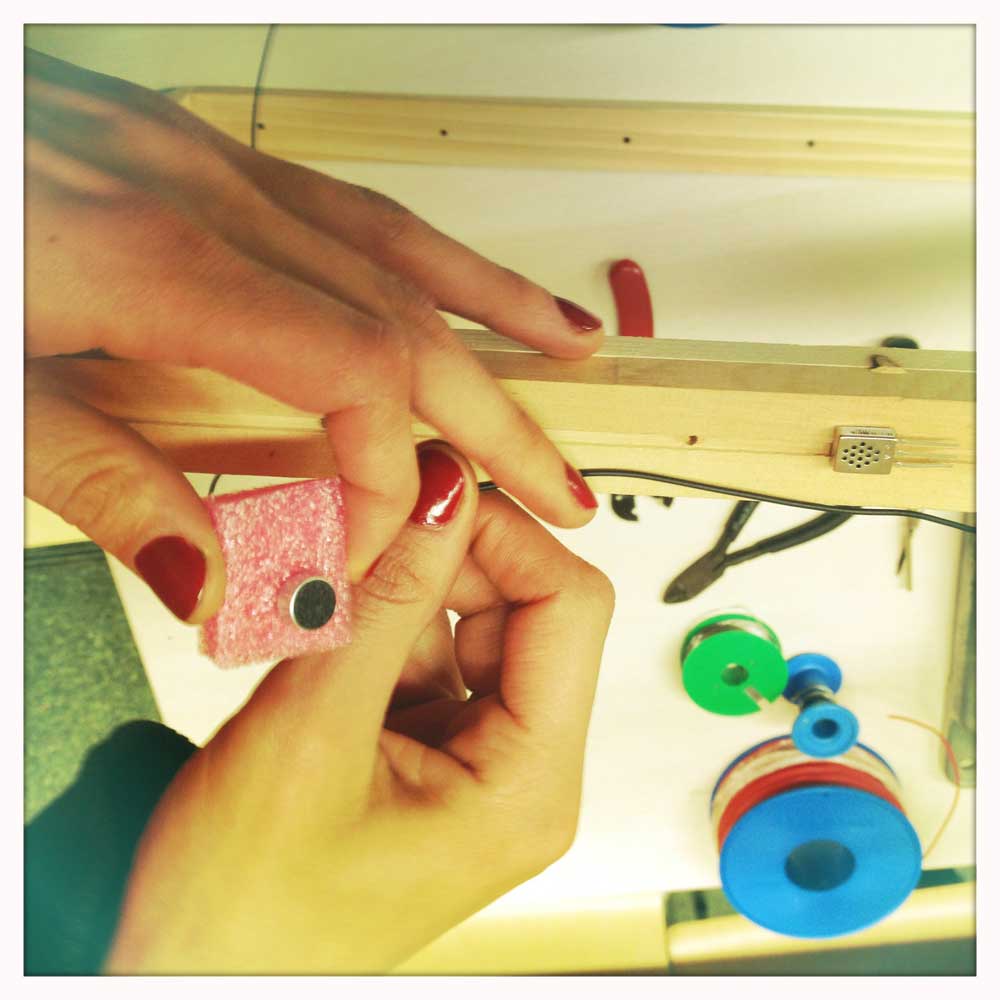
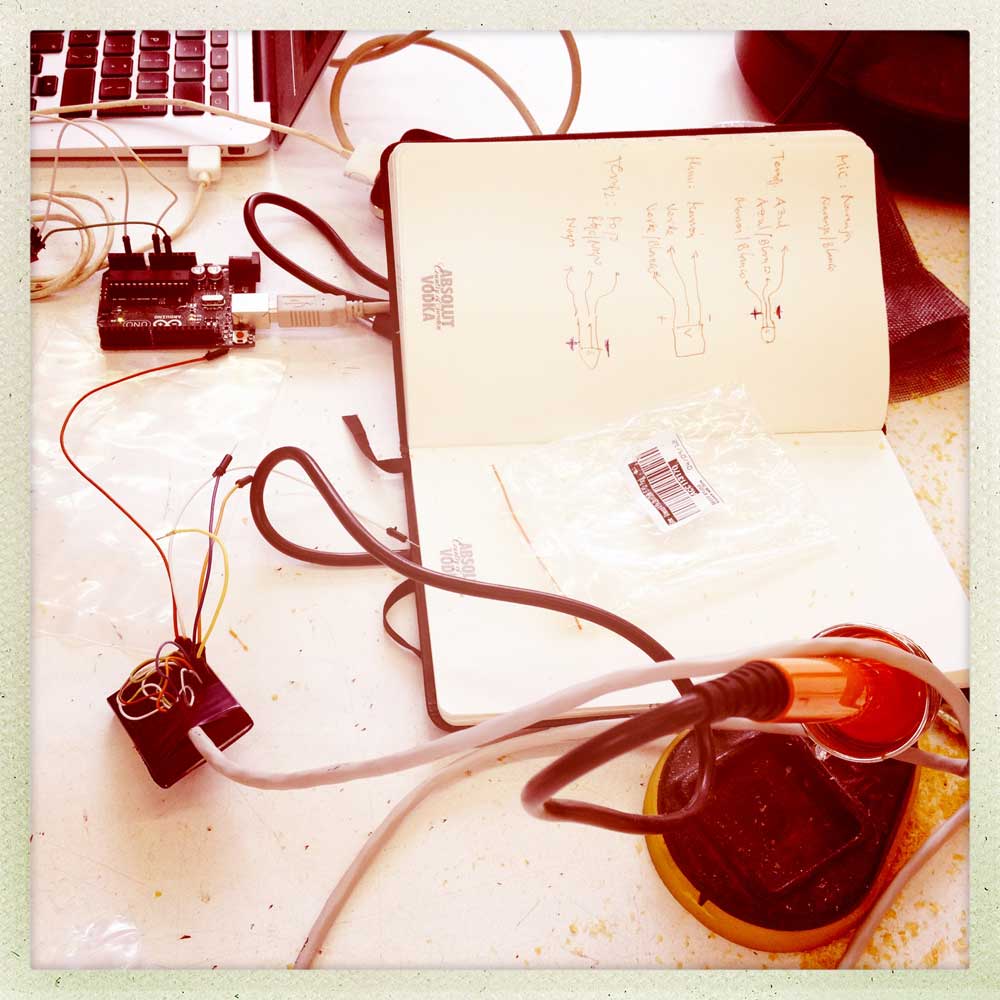

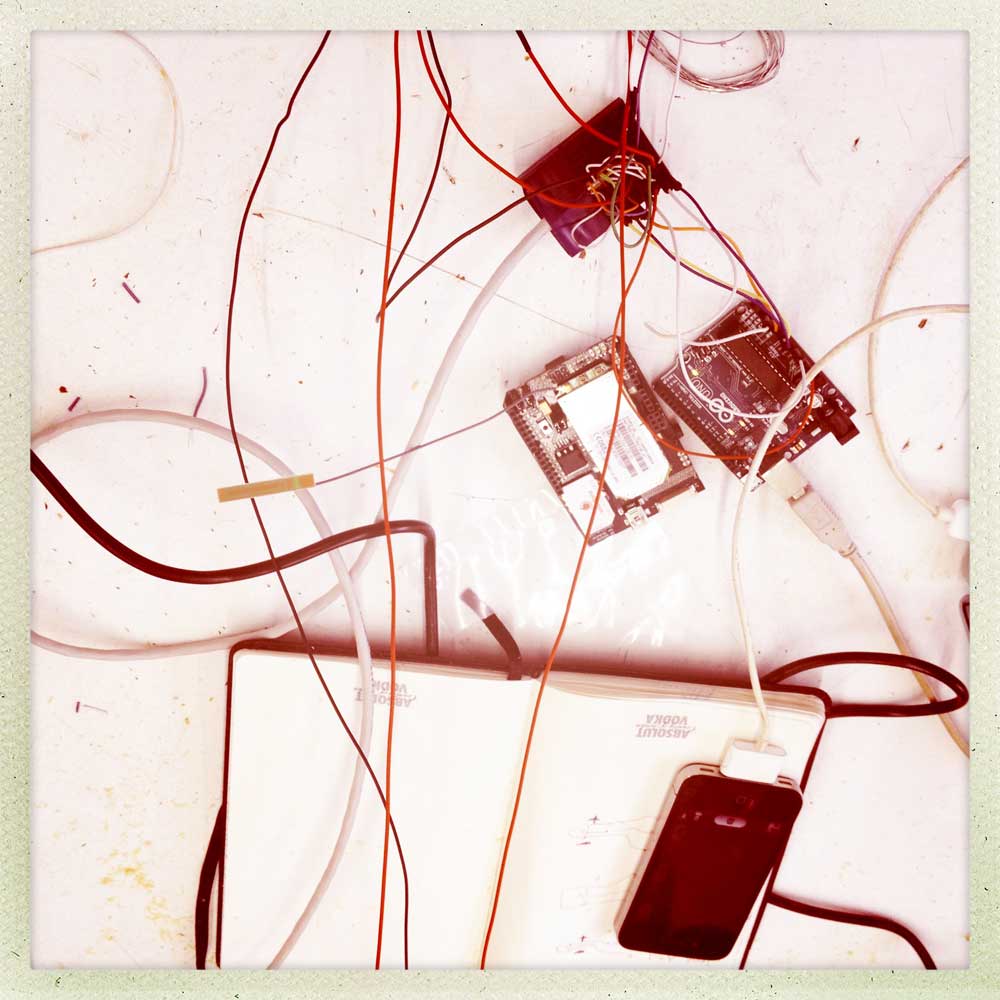
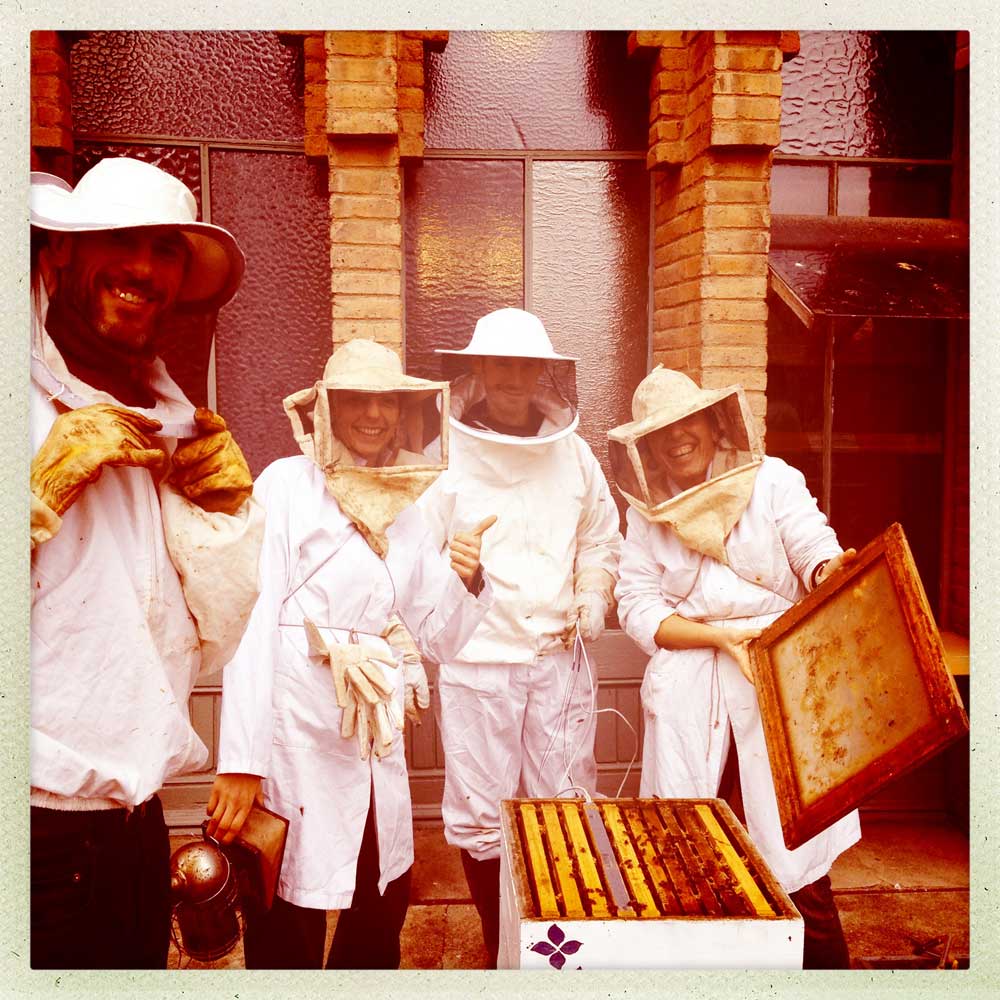
………………………………………………………………
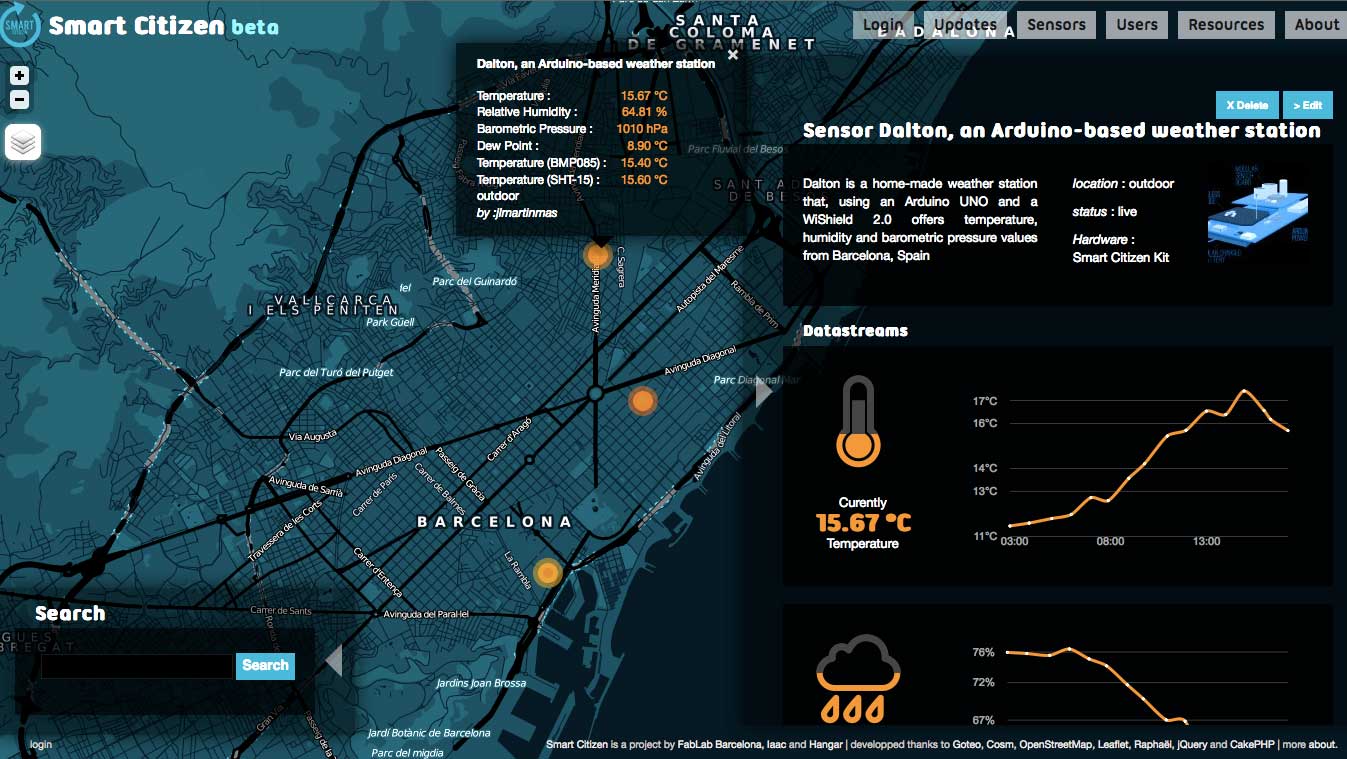
further reading
litterature
- [Tautz 2008] Jürgen Tautz, The Buzz about Bees - Springer Verlag Berlin Heidelberg
- [von Frisch 1955] Karl von Frisch, The Dancing Bees - Harcourt, Brace & Company New York
- [Eisner 2003], Thomas Eisner, For Love of Insects - Harvard University Press
- [Seeley 2010], Thomas Seeley, Honeybee Democracy - Princeton University Press
- [Viswanathan 2011], Gandhimohan M. Viswanathan, The Physics of Foraging - Cambridge University Press
scientific papers
- Automatic Microclimate Controlled Beehive Observation System - keywords: bee, beehive, observation system
- Bees, Honey, Larvae and Pollen in Biomonitoring of Atmospheric Pollution - keywords: cadmium, chrome, honey bees, lead, nikel, pollution
- Collective control of the timing and type of comb construction by honey bees - keywords: honey bee, comb, drone, decentralized control, life history, self-organization
- Hobos Tutorial - keywords: bee research group Würzburg, Germany
- Honeybee tracking with microchips: a new methodology to measure the effects of pesticides - keywords: Honeybee, Pesticides, RFID tags, Life-history traits, Foraging, Automatic monitoring
- Animal Cognition: An Insect’s Sense of Time? - keywords: bees, time, circadian rhythm
- The Language of Bees - keywords: von Frisch
- Responses to light under varying magnetic conditions in the honeybee, Apis mellifera - keywords: EMF (earth's magnetic field), light, honey bee
- Magnetic Material Arrangement In Apis Mellifera Abdomens - keywords: biological and biomimetic materials, magnetite nanoparticles
- Monitoring of swarming sounds in bee hives for early detection of the swarming period - keywords: swarming, temperature, sound, humidity
- Platform for bee-hives monitoring based on sound analysis. - keywords: Apis mellifera, environmental surveillance, honey bee, remote sensing
- Monographic revision of the melittid bees - keywords: diversification, monophyletic group, honeybee, biogeogra- phy, phylogeny
- Positional Communication and Private Information in Honeybee Foraging Models - keywords: communication, waggle dance, foraging fields
- A Common Pesticide Decreases Foraging Success and Survival in Honey Bees - keywords: honey bees, pesticides, colony collapse disorder
- Recalling Urban Nature - linking city people to ecosystem services - keywords: people, society, ecosystems
- Analysis of the Waggle Dance Motion of Honeybees for the Design of a Biomimetic Honeybee Robot - keywords: honey bees, robots, biomimetics, waggle dance
- Tracking von Radar-detektierten Flu ̈gen von Honigbienen - keywords: flightroutes, tracking, radar, sender receiver
- Detection and Learning of Floral Electric Fields by Bumblebees - keywords: flowers, bees, attraction


